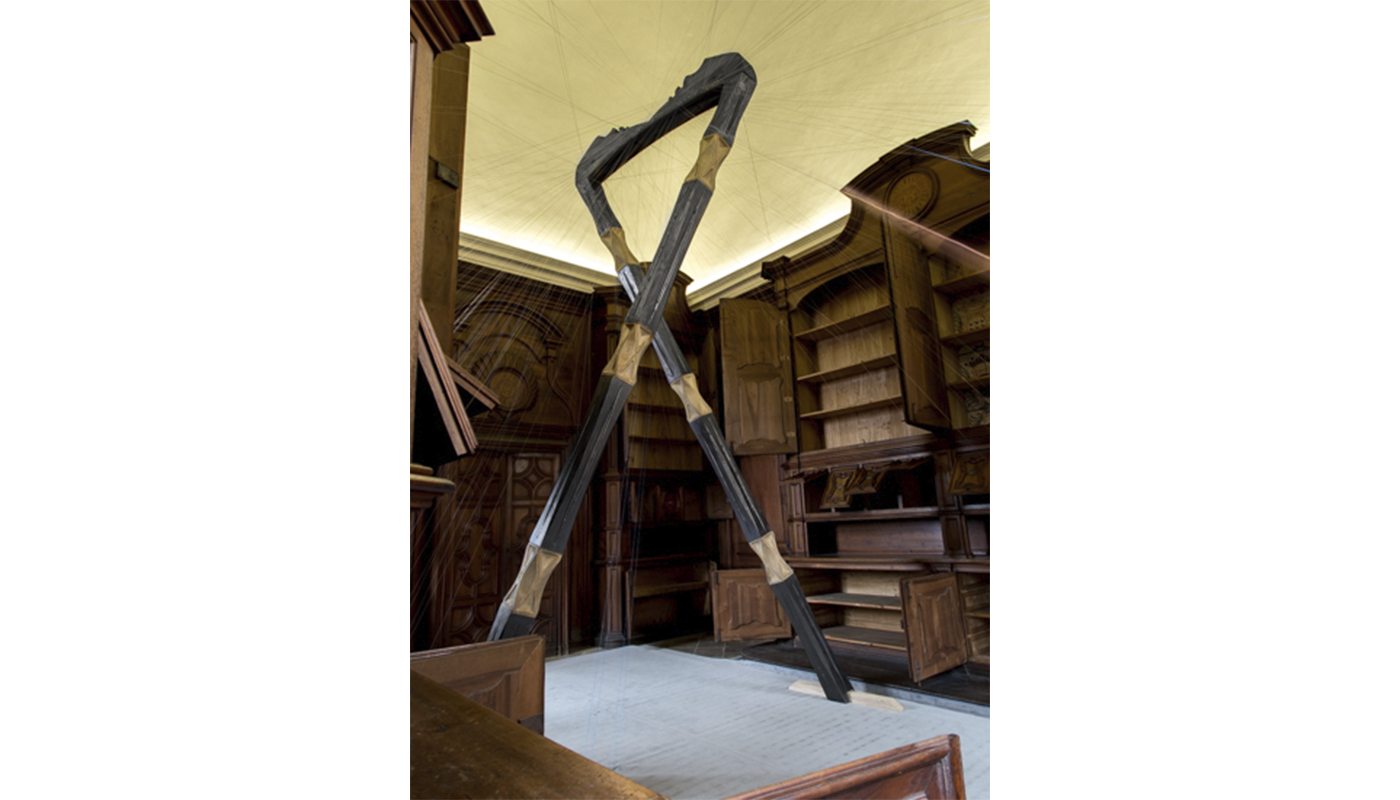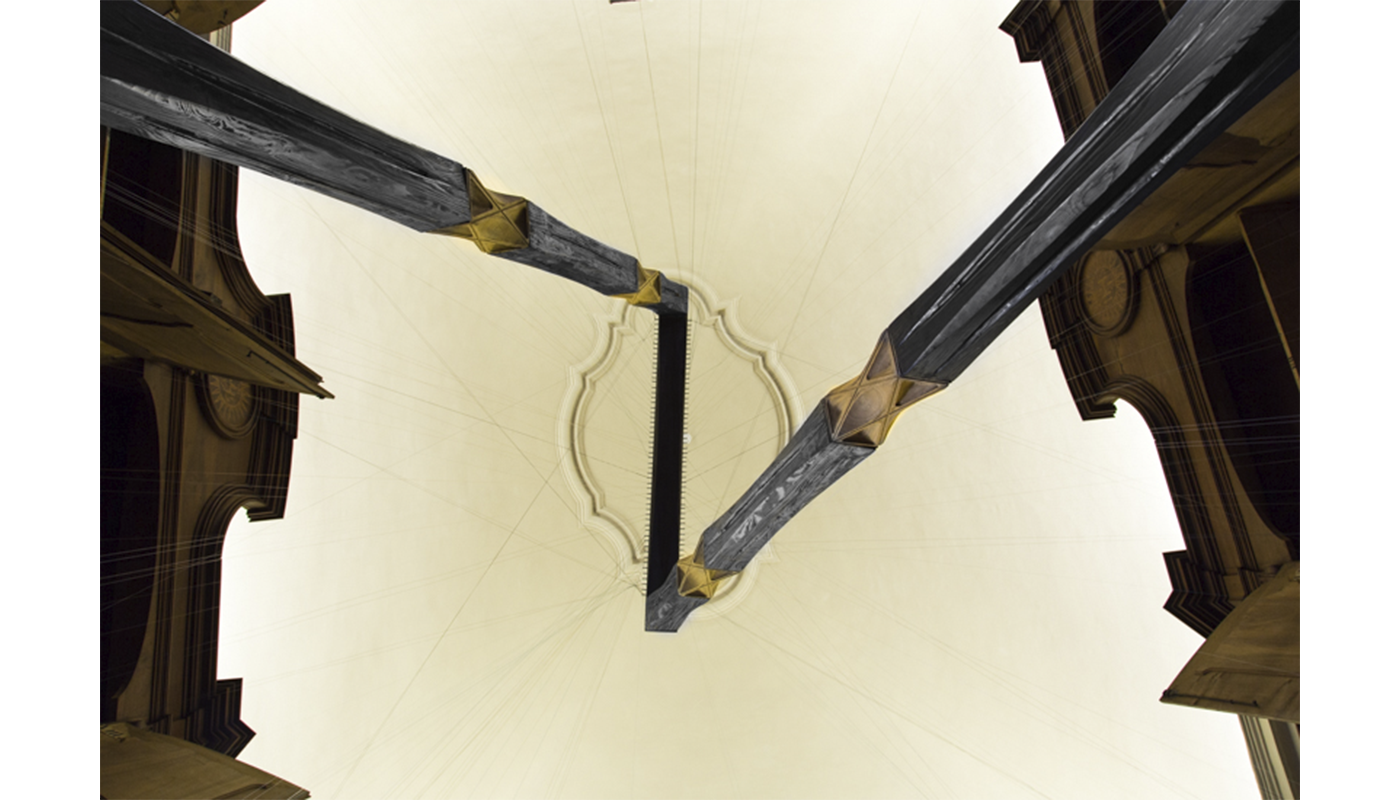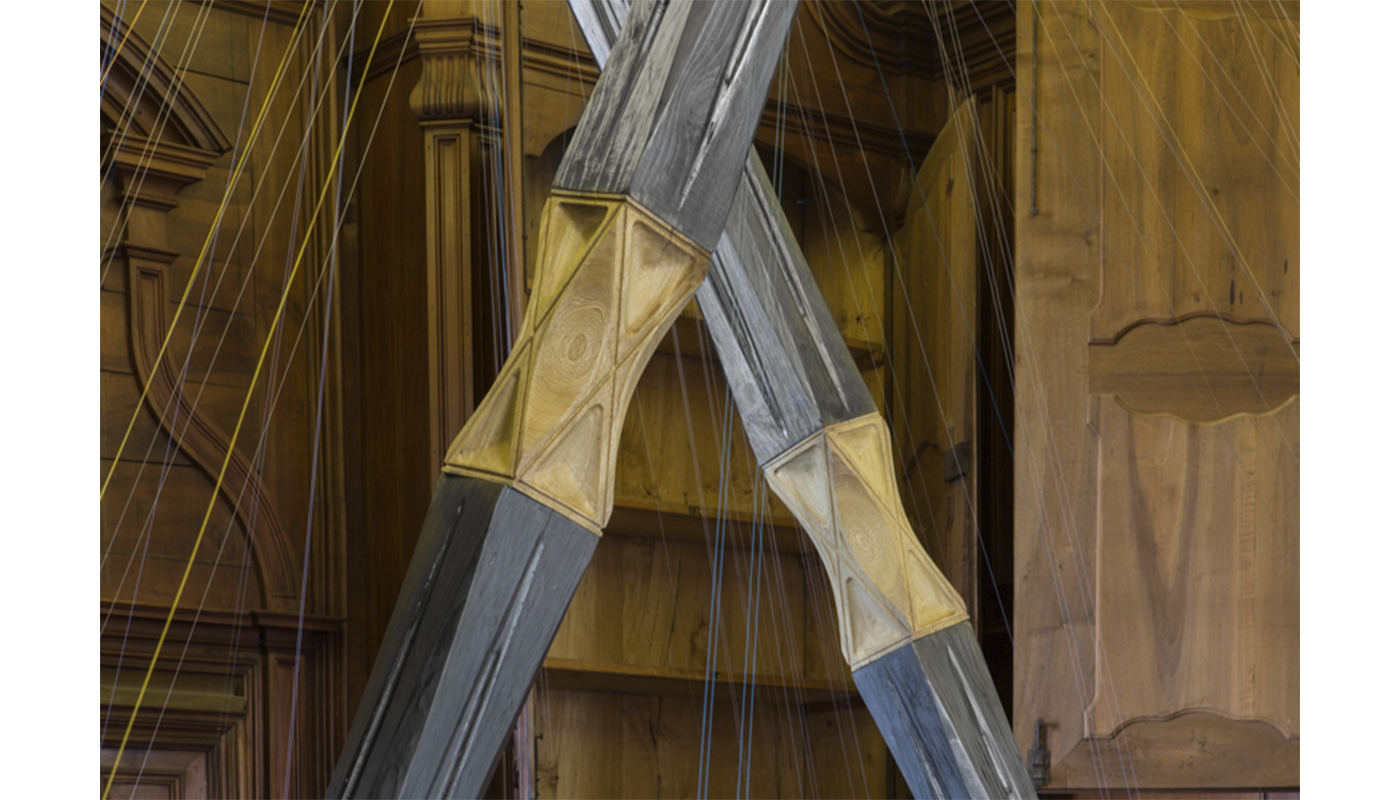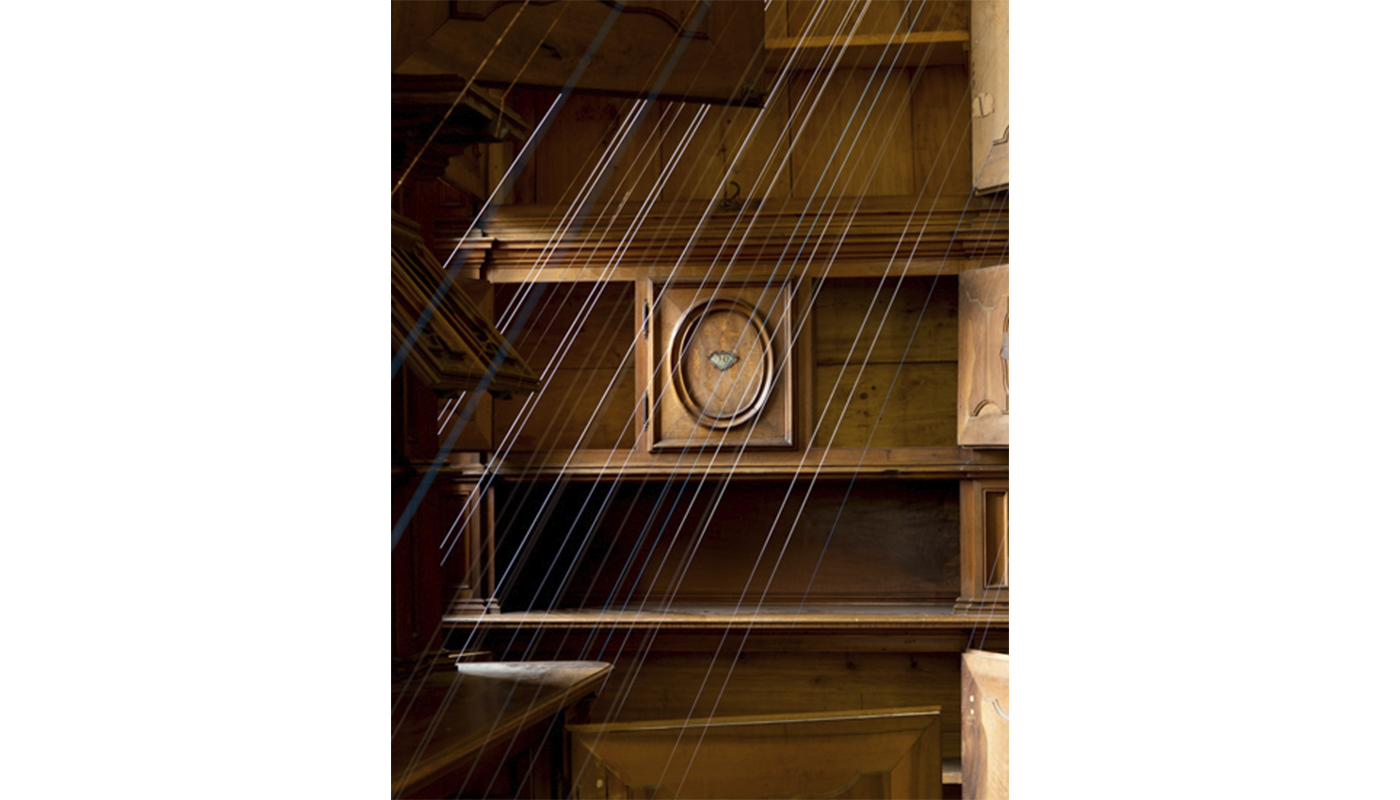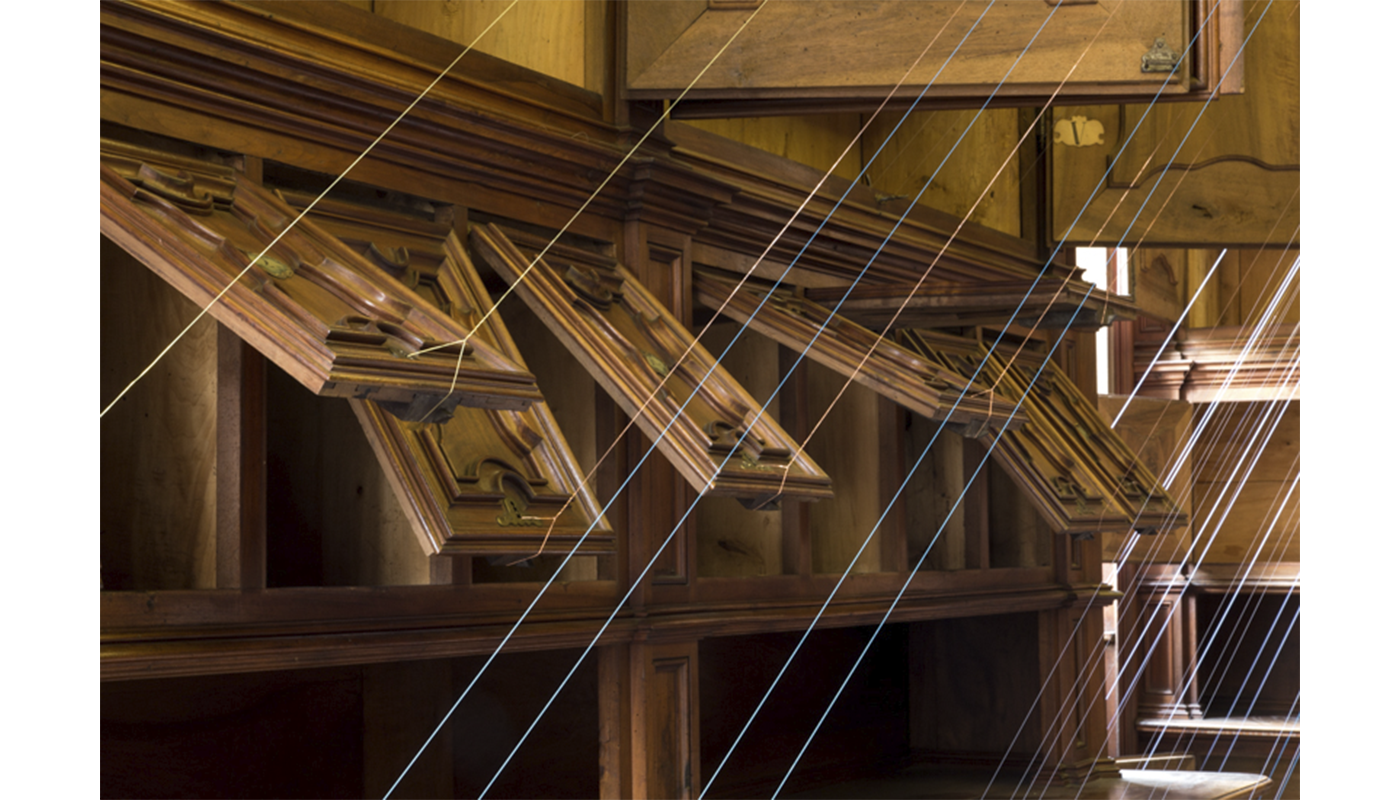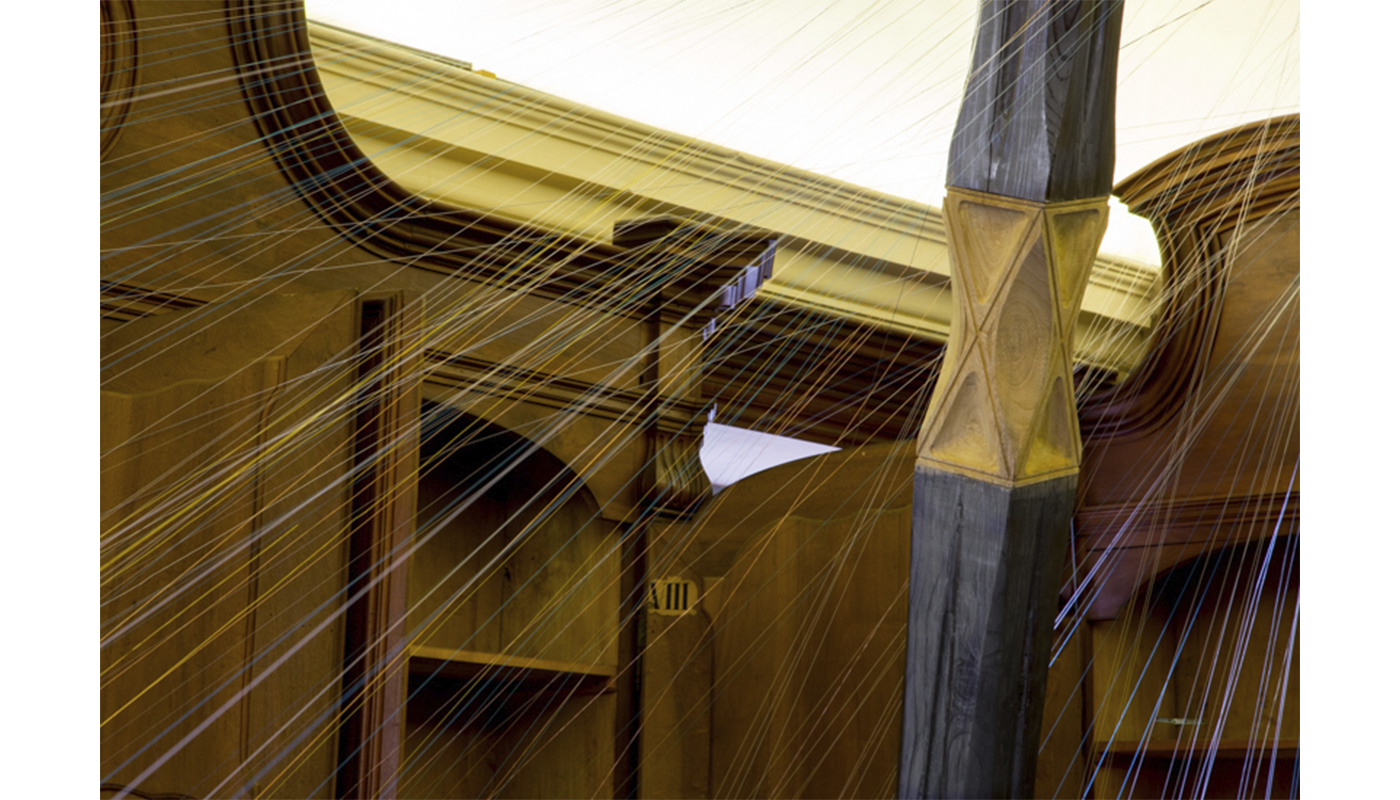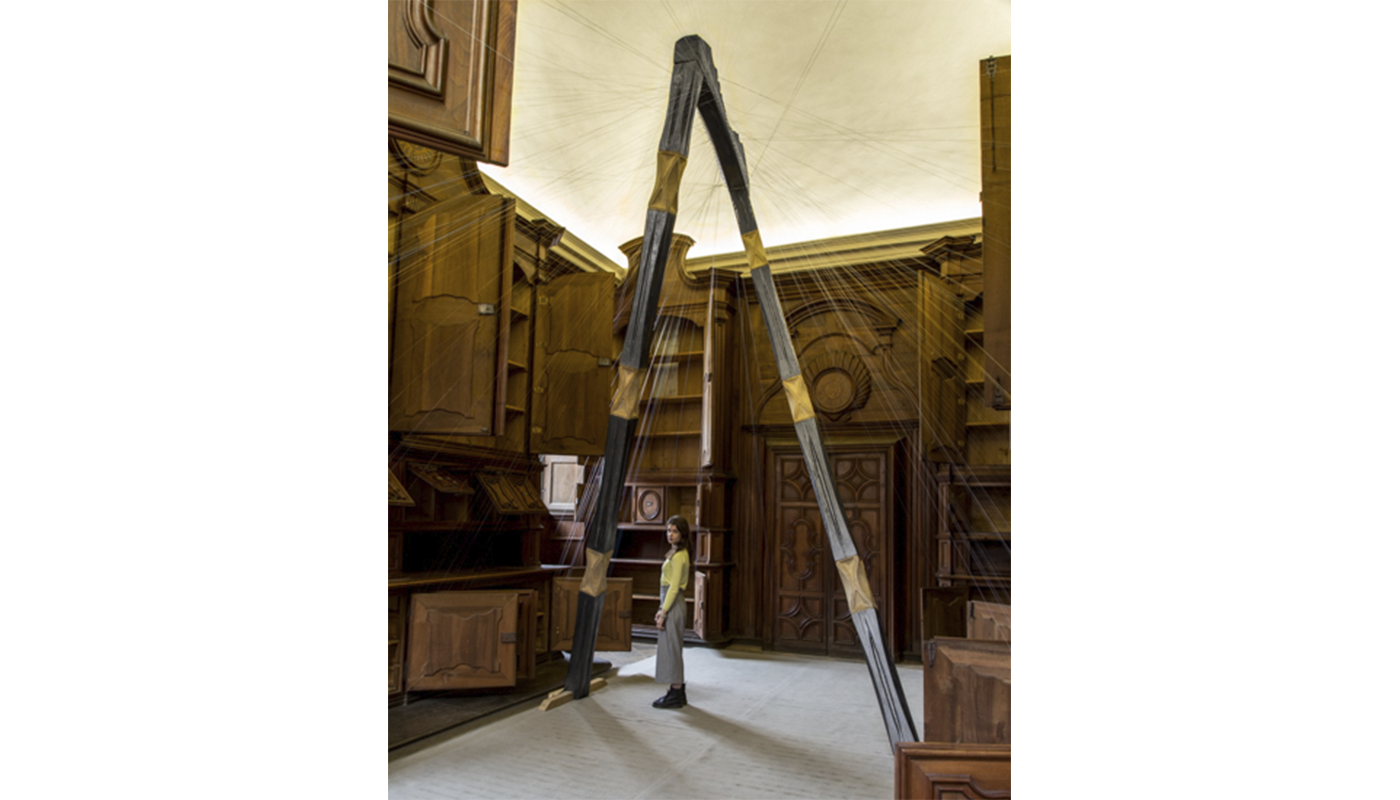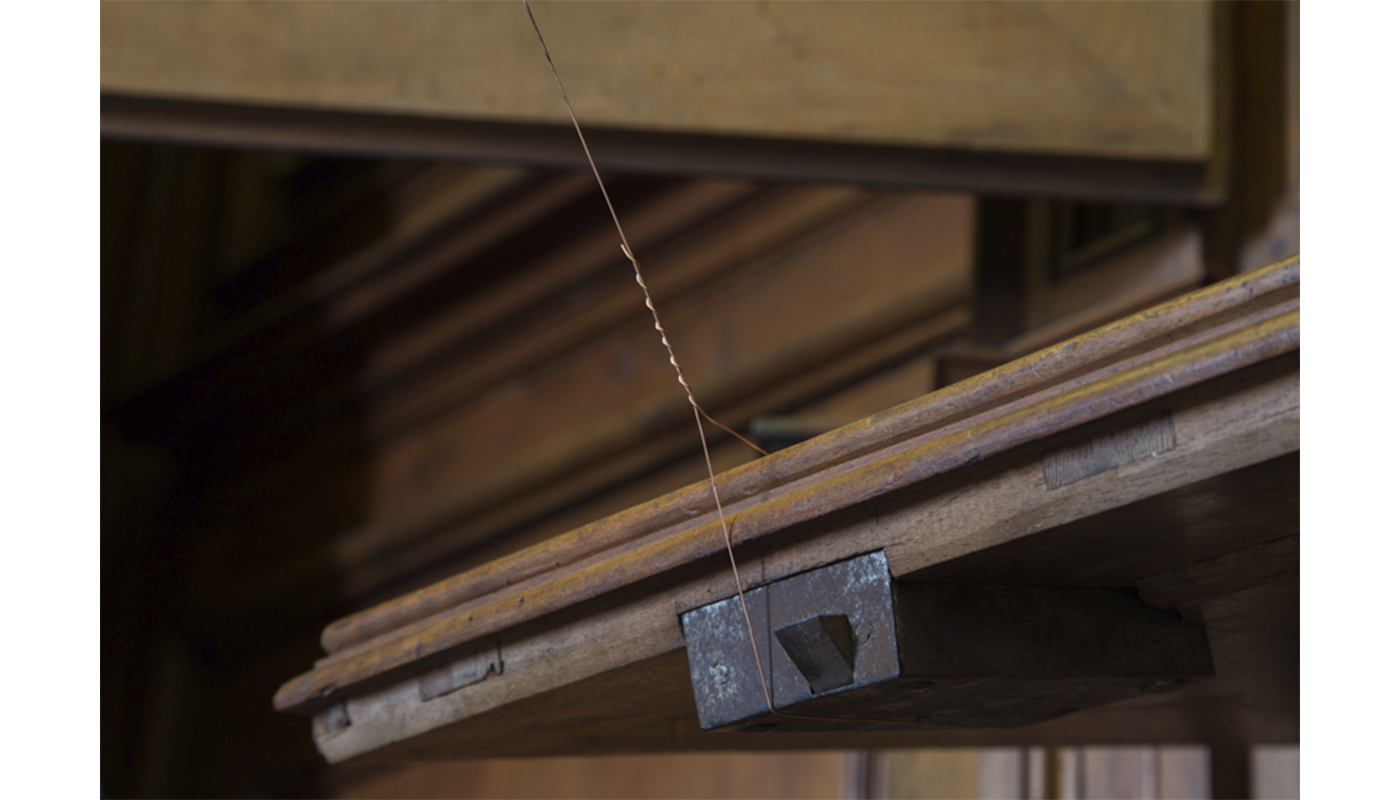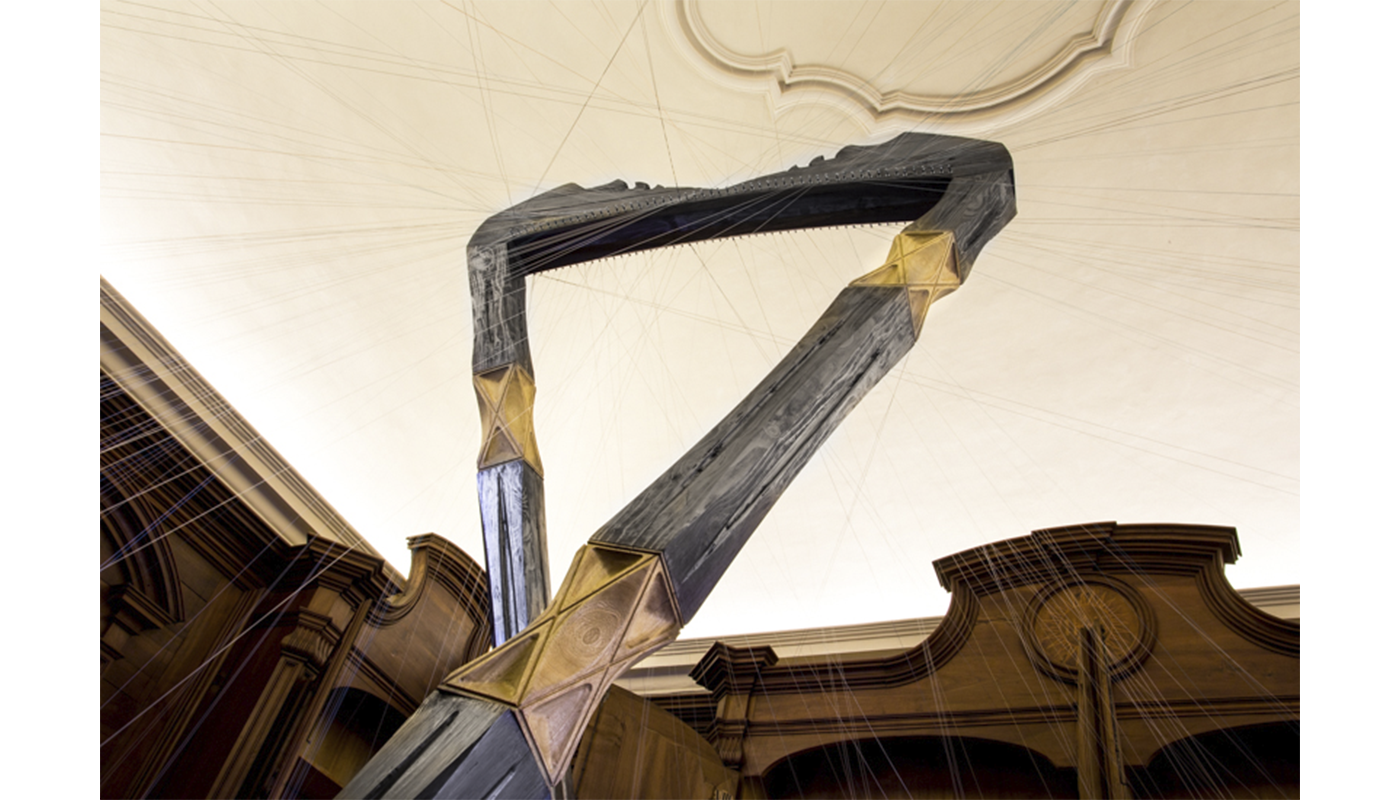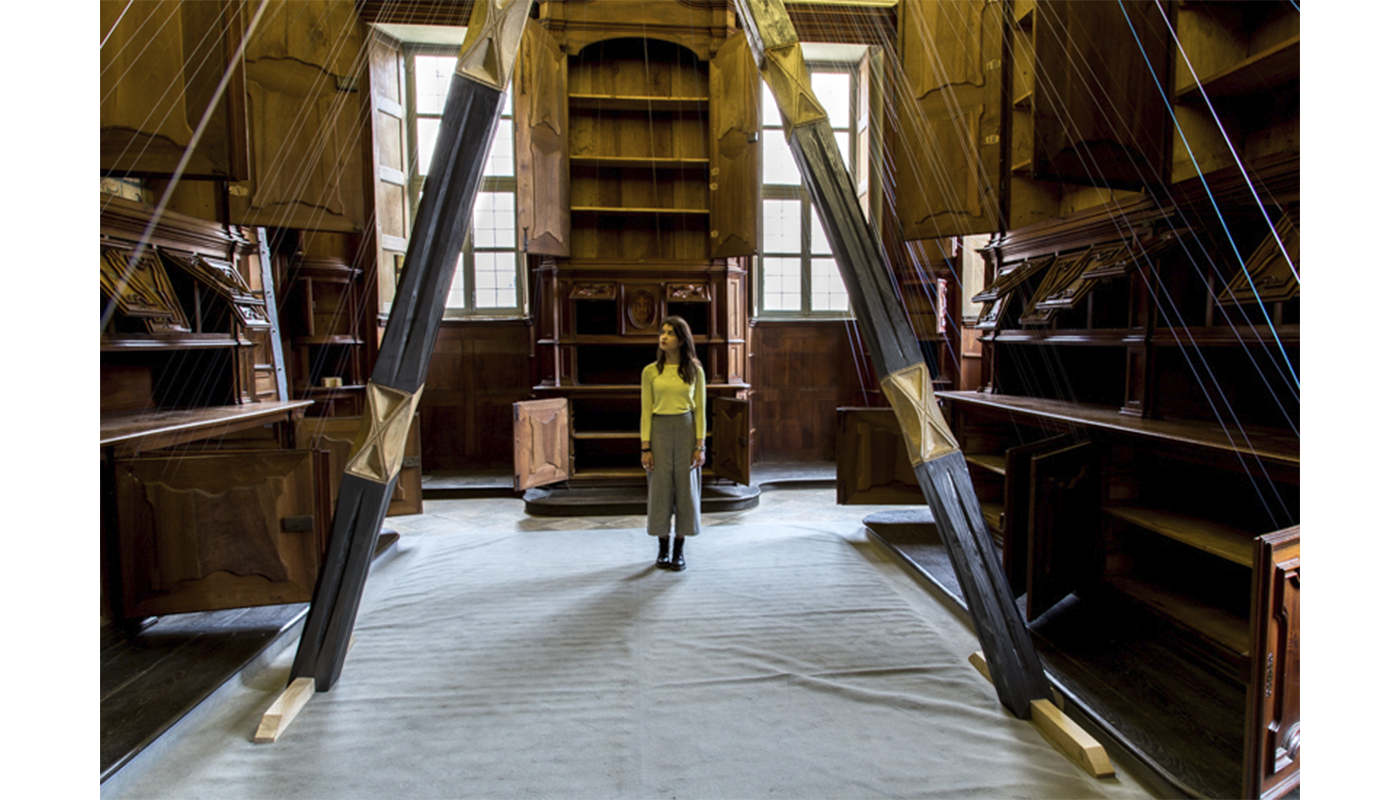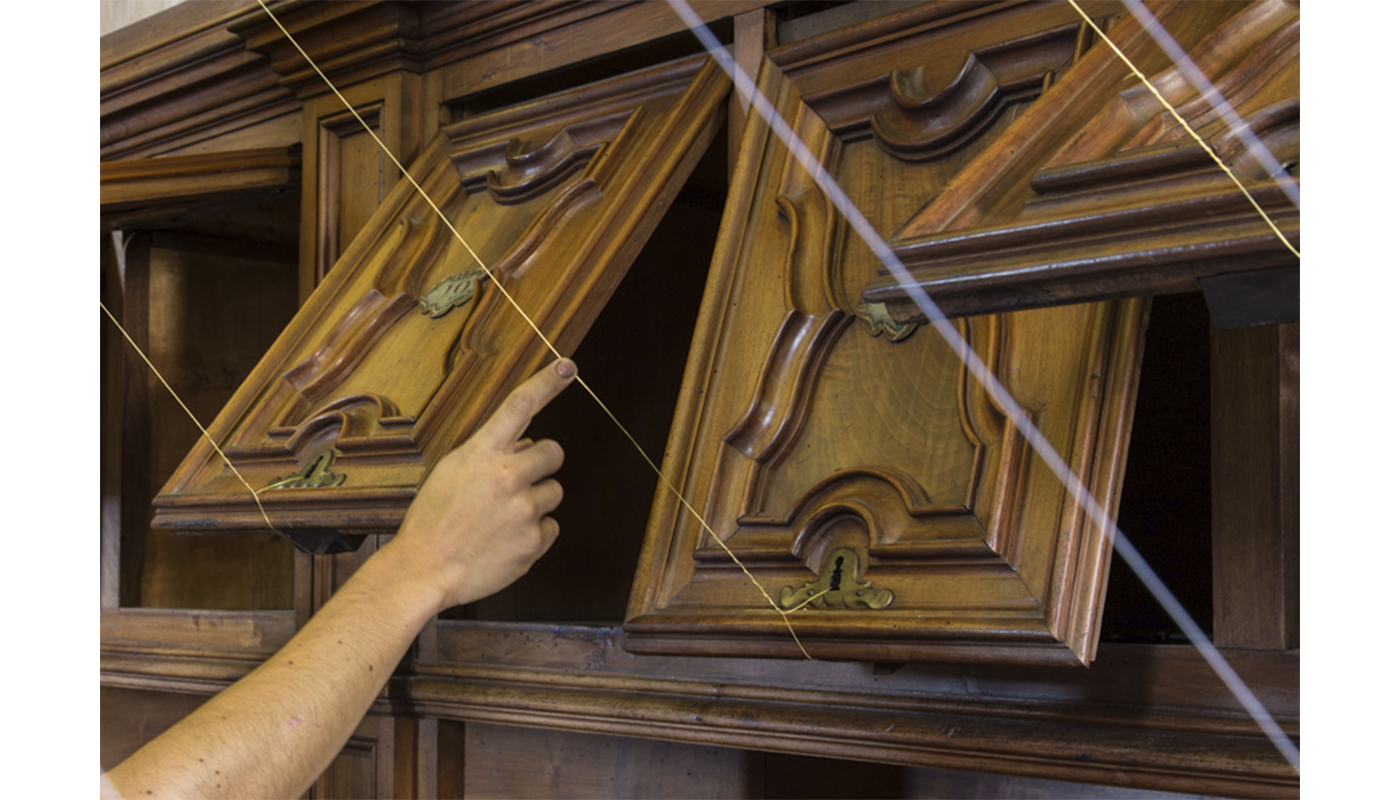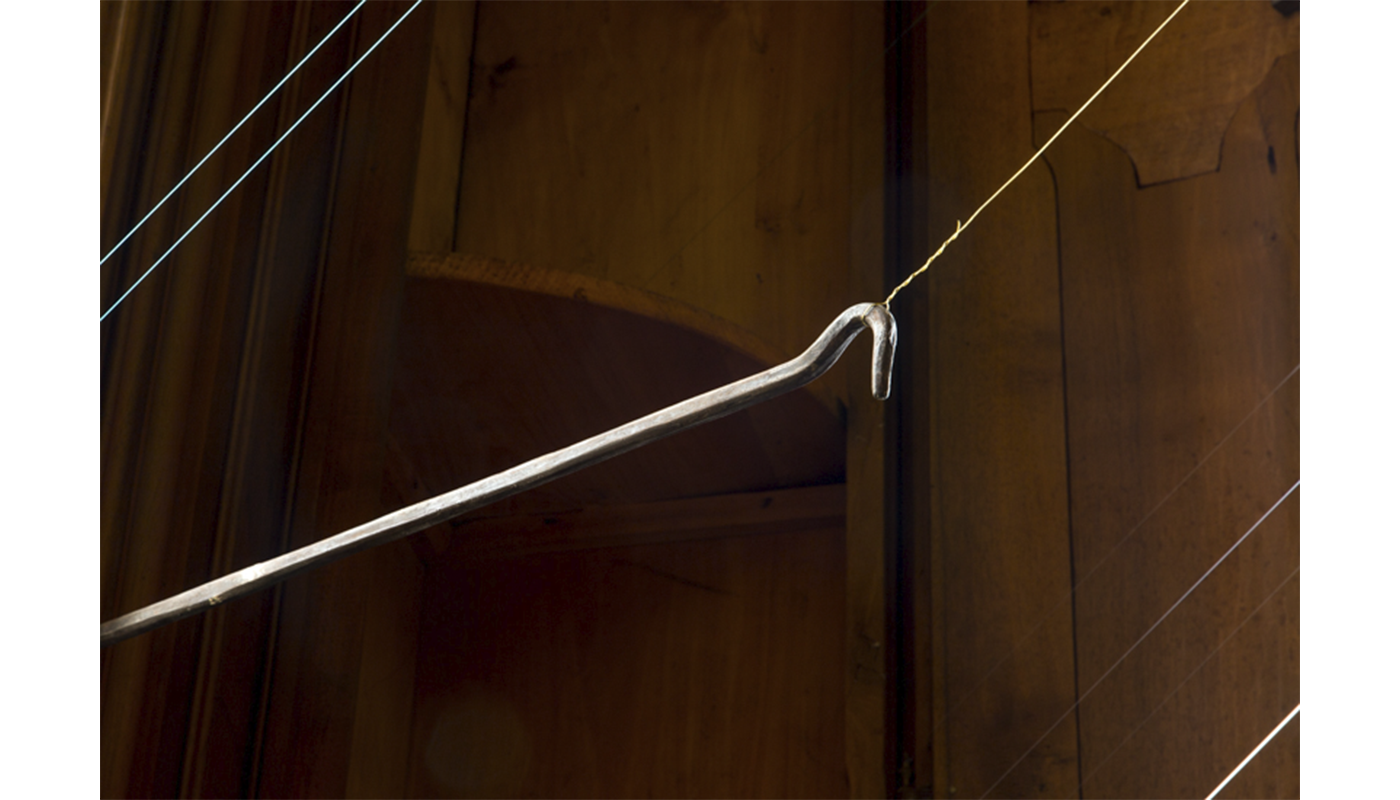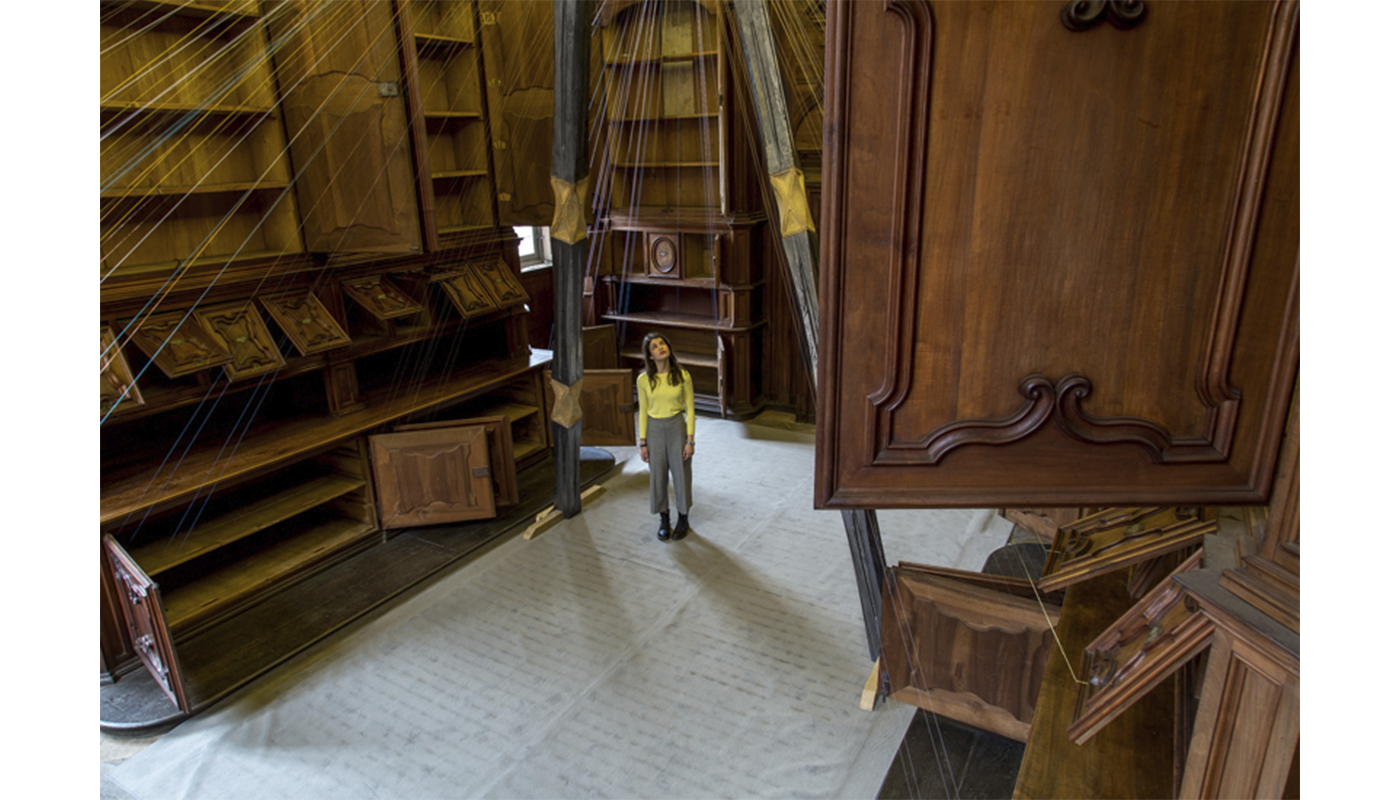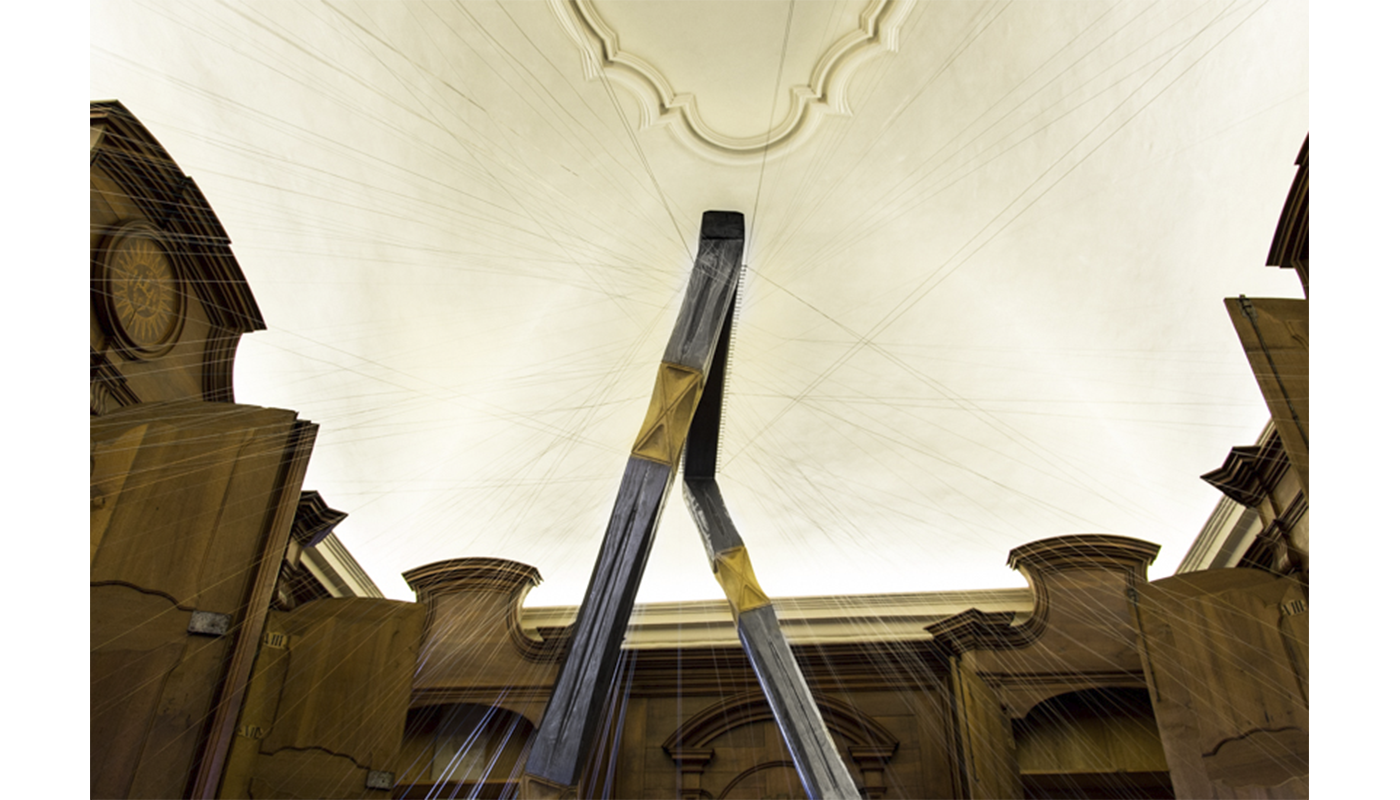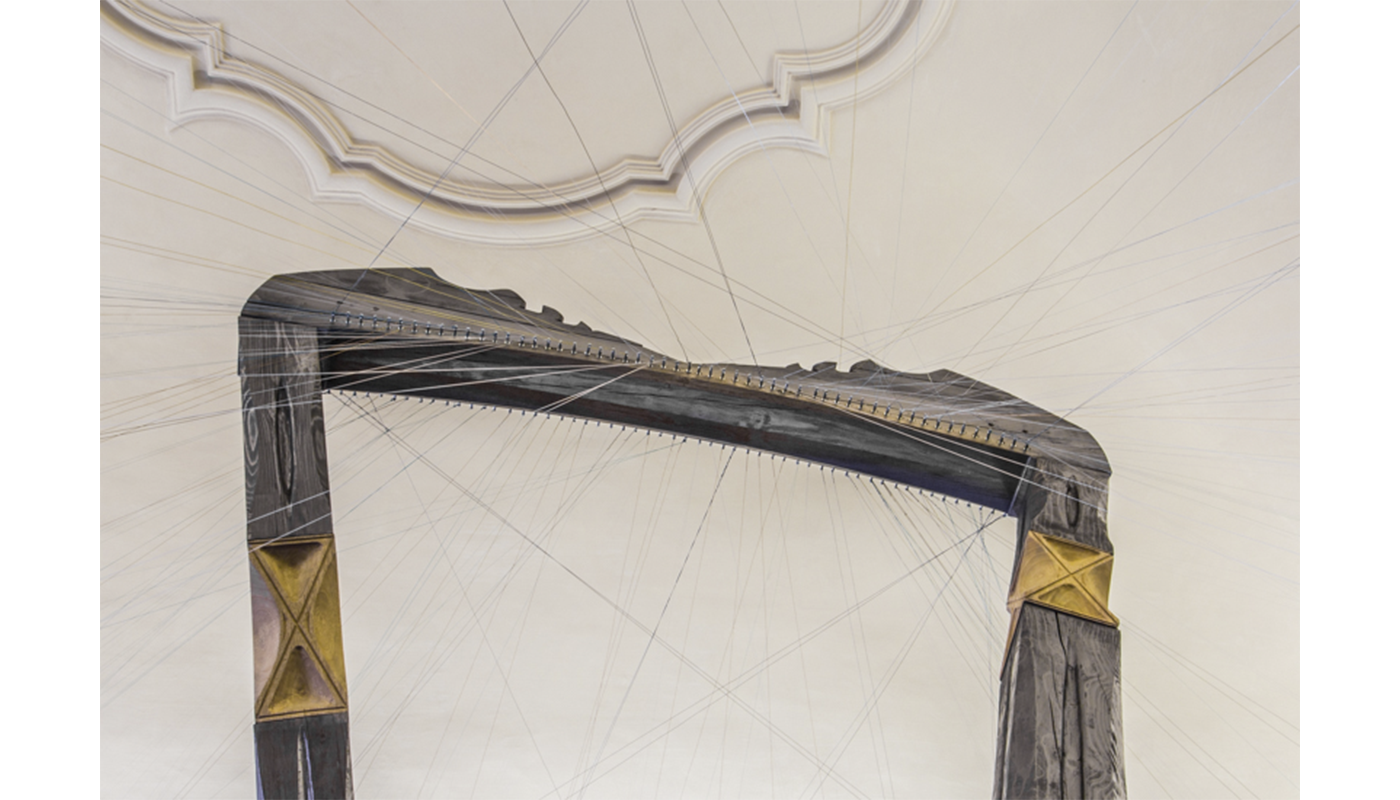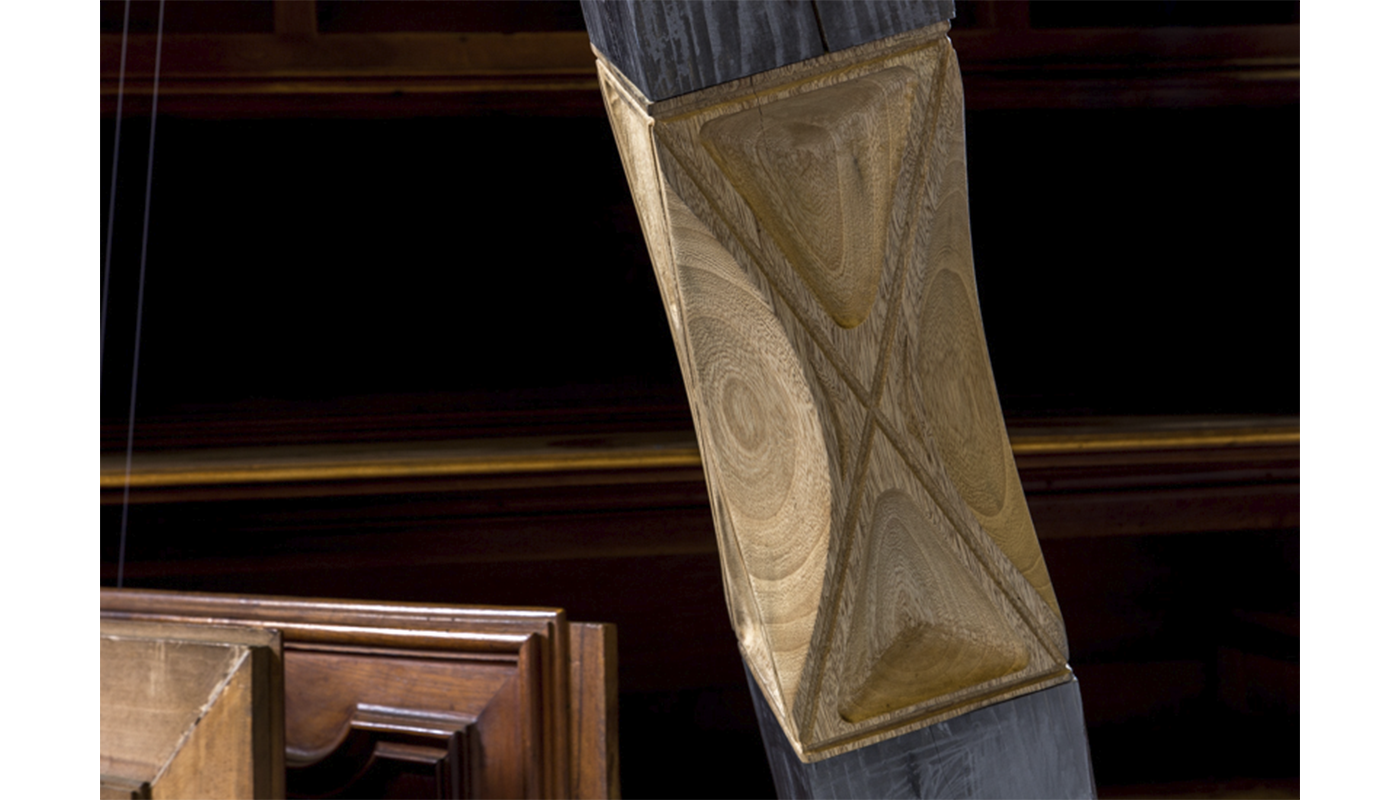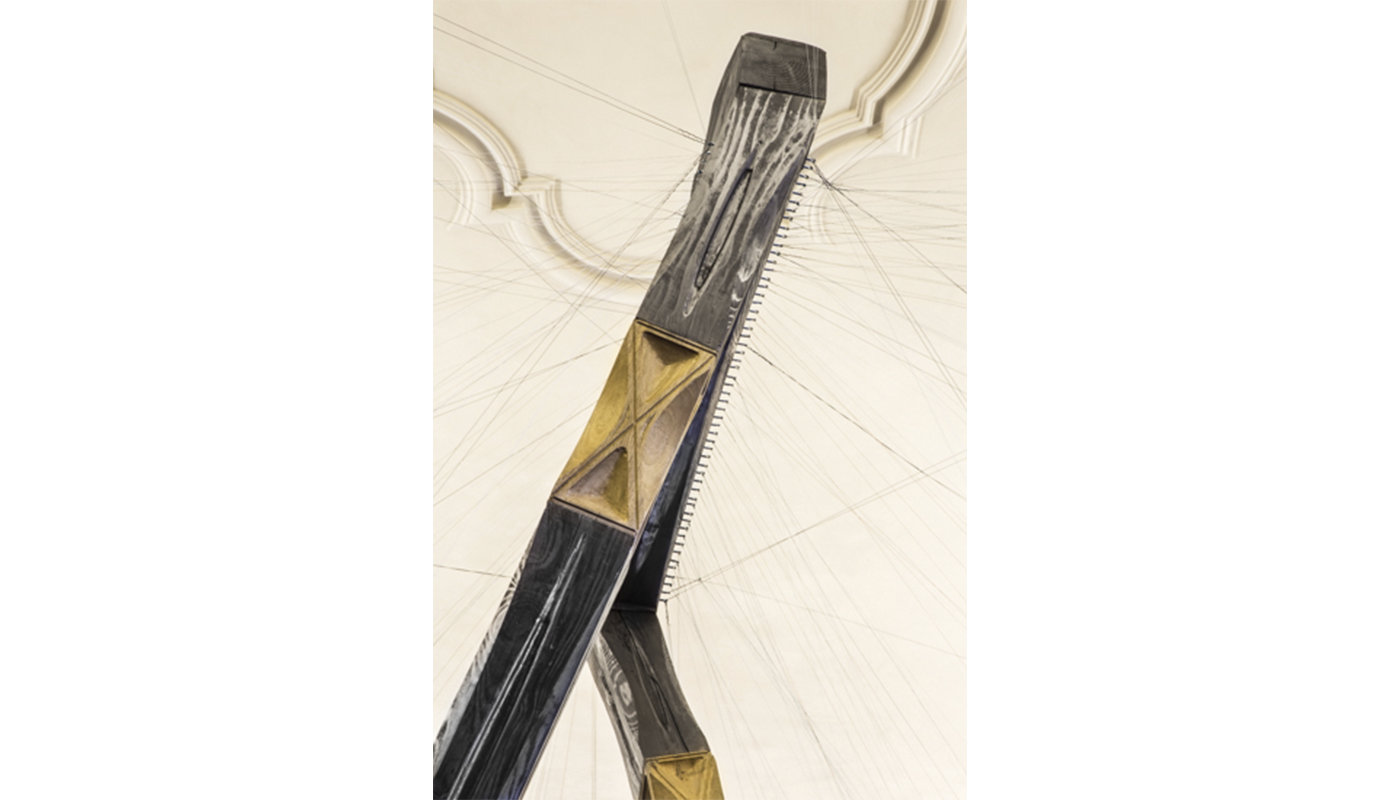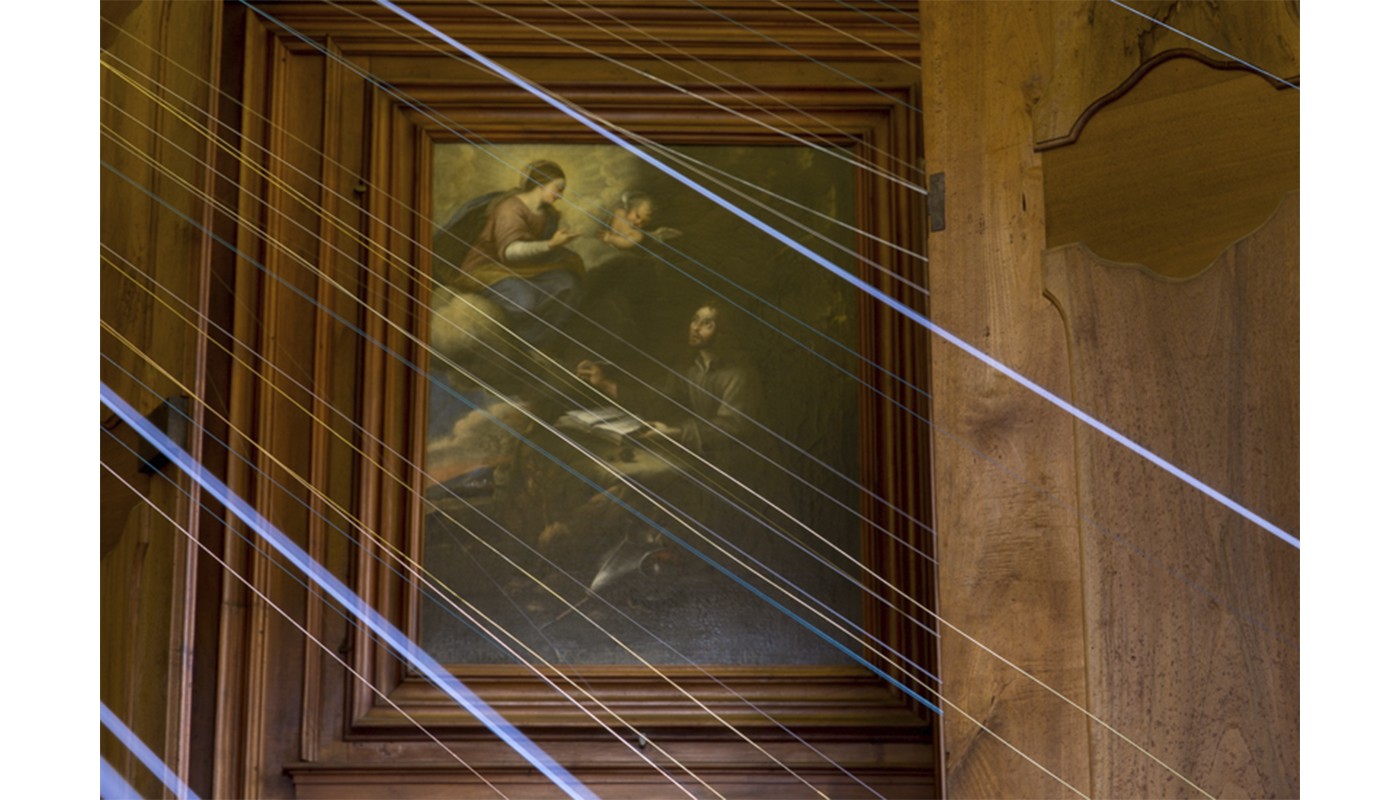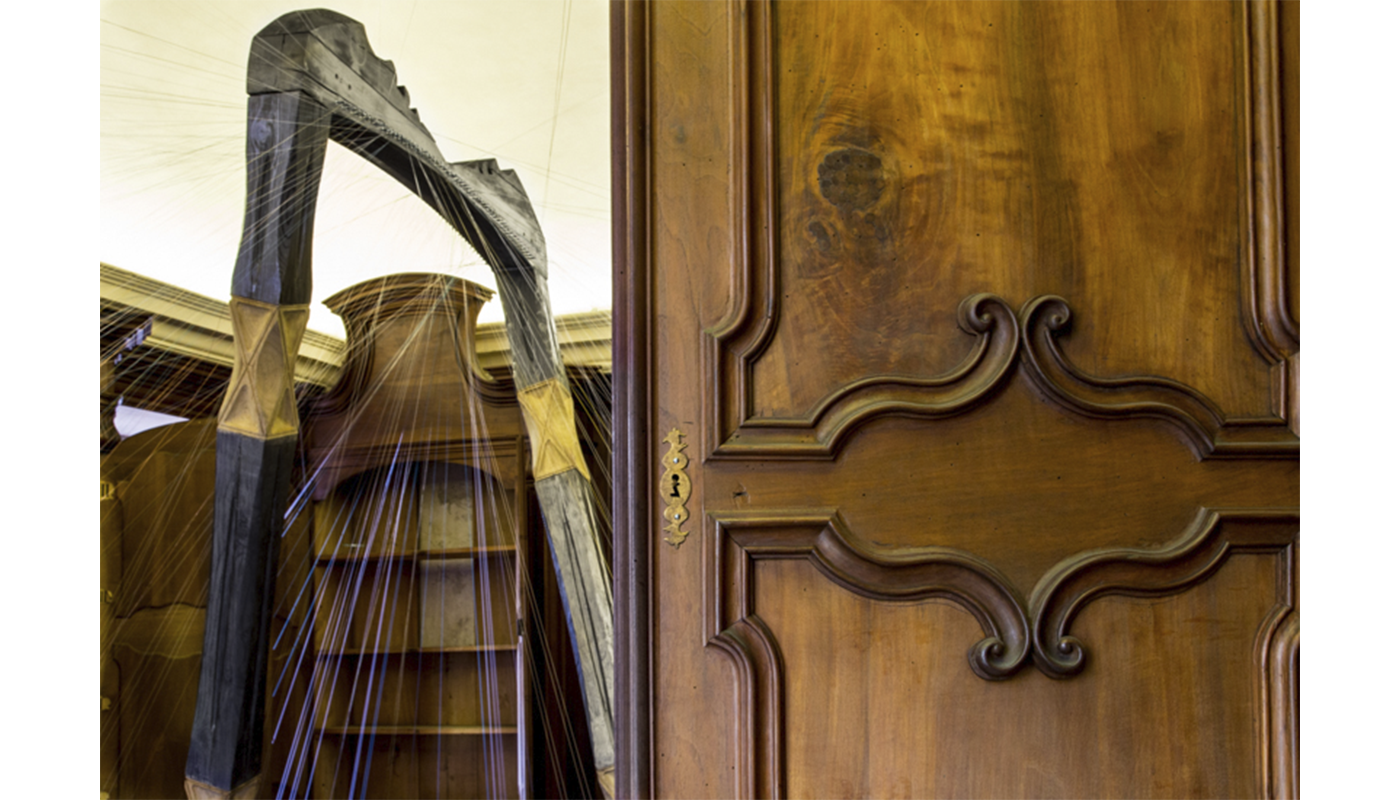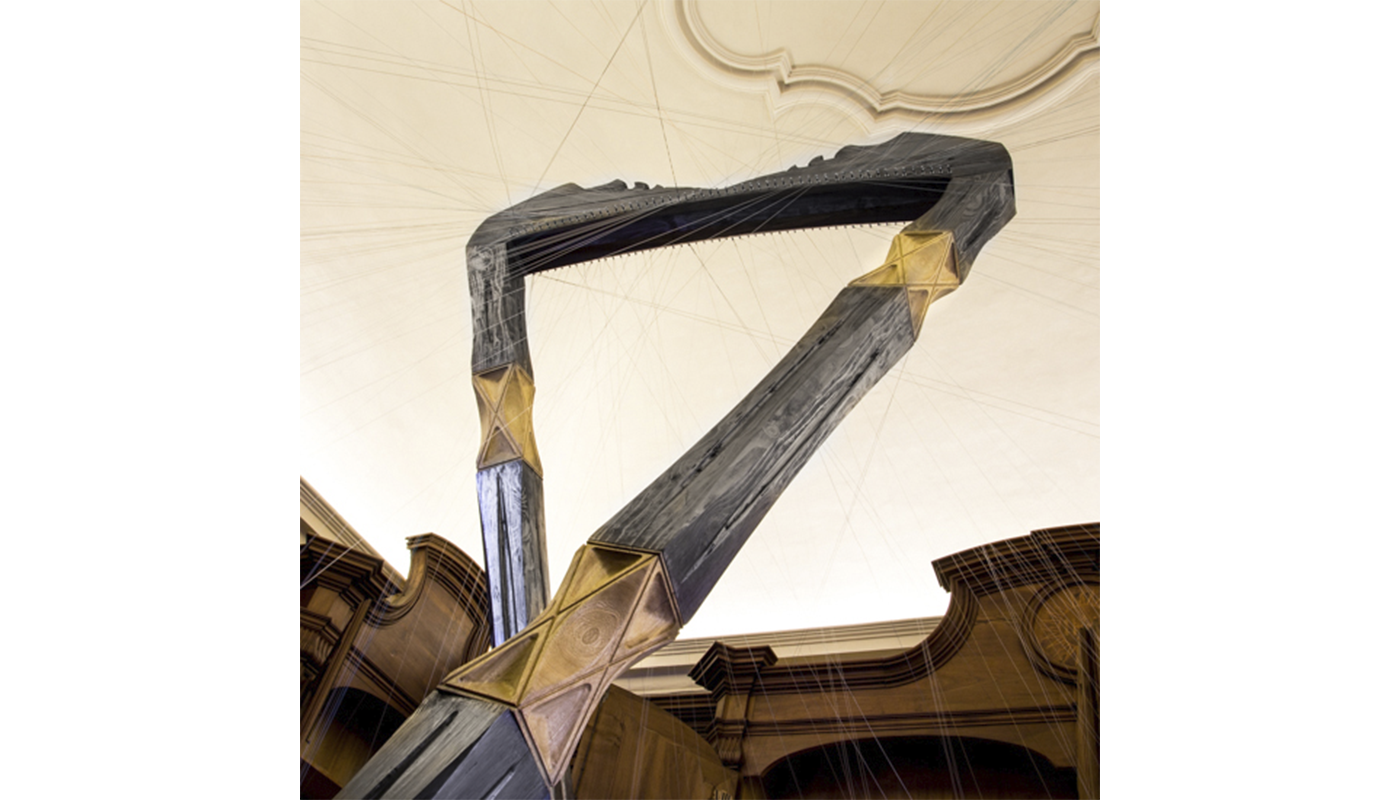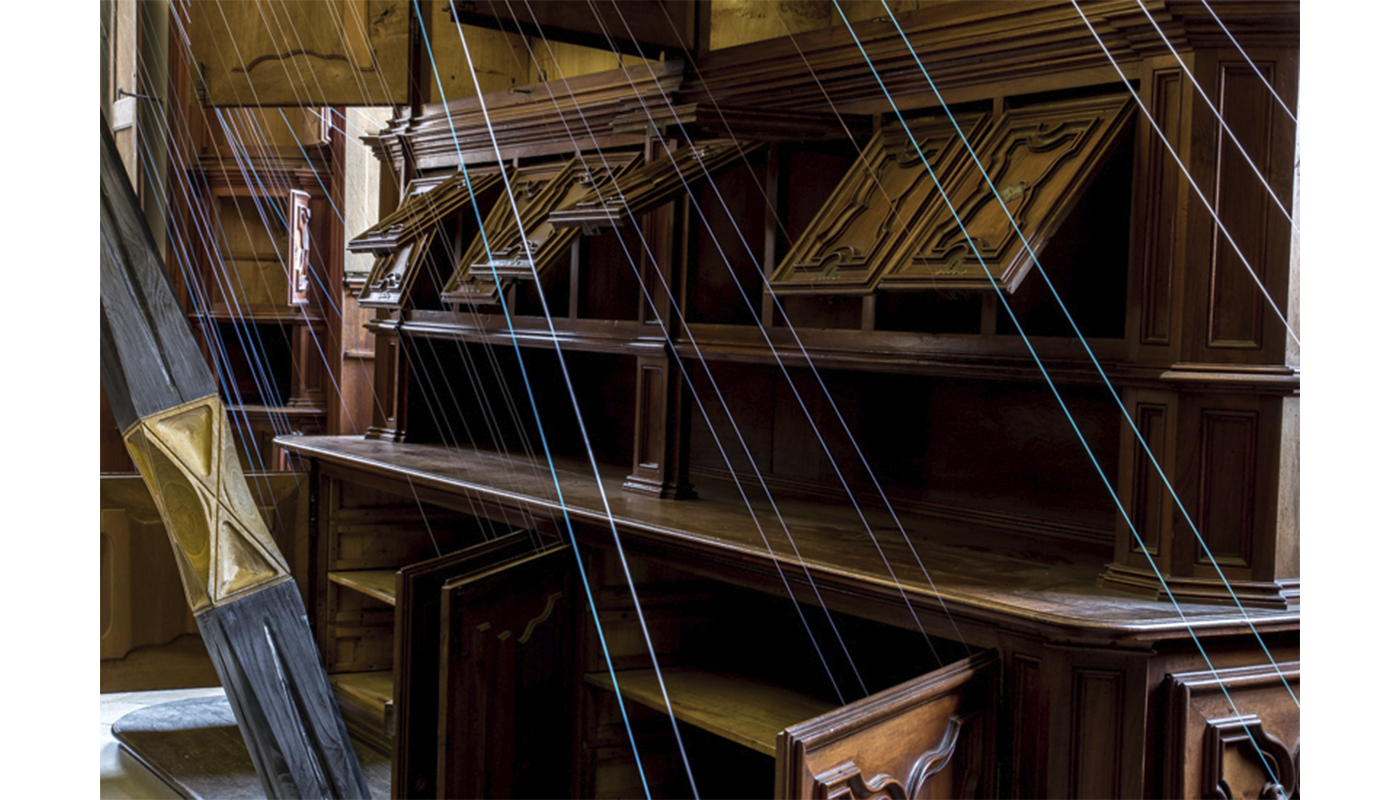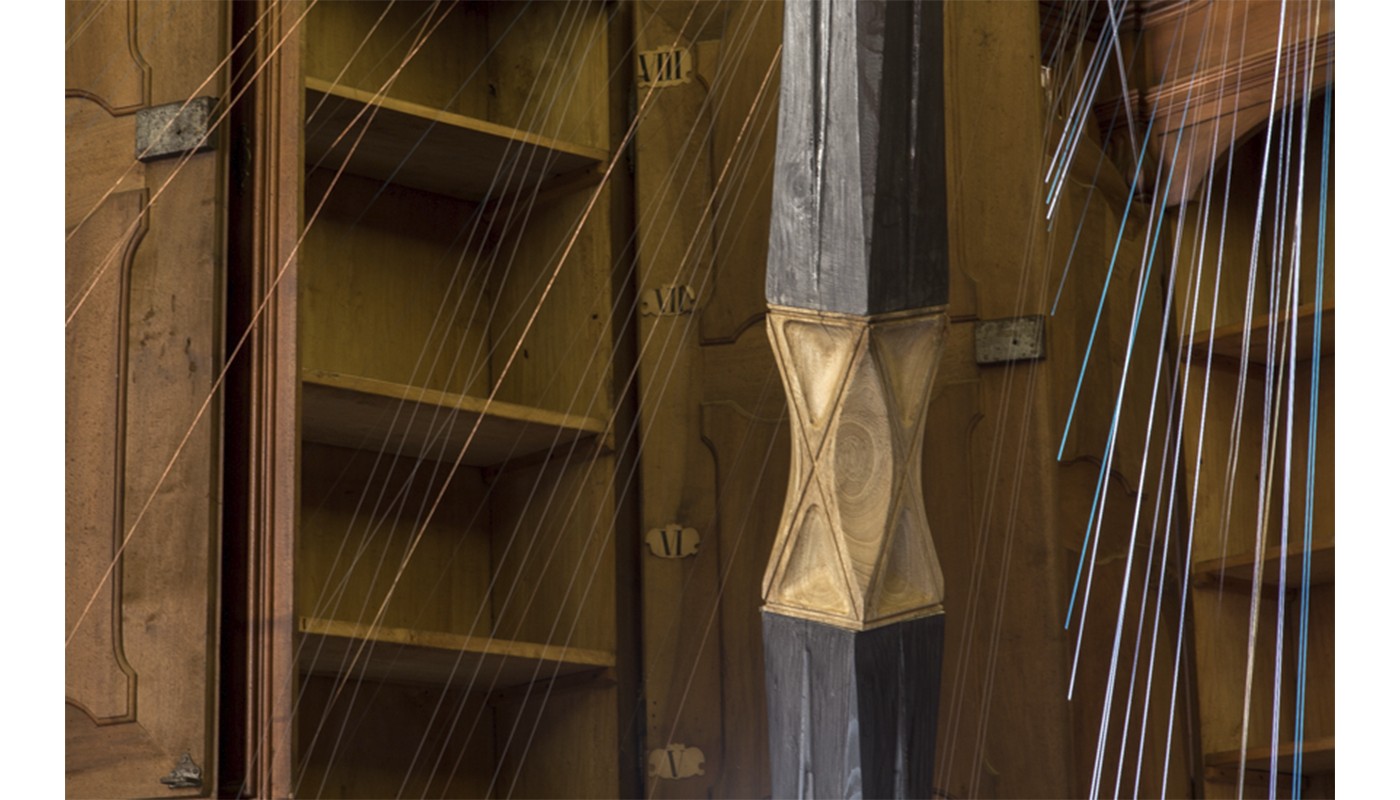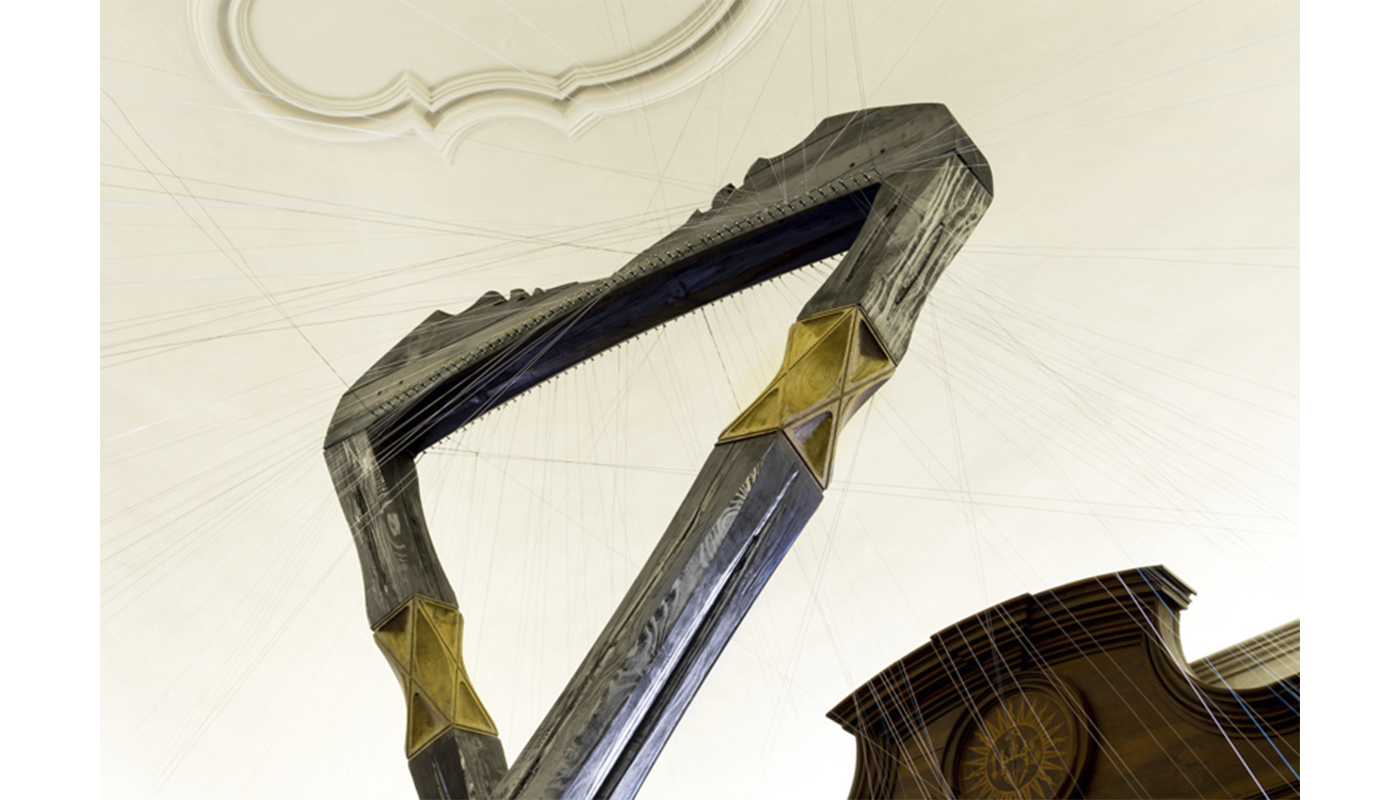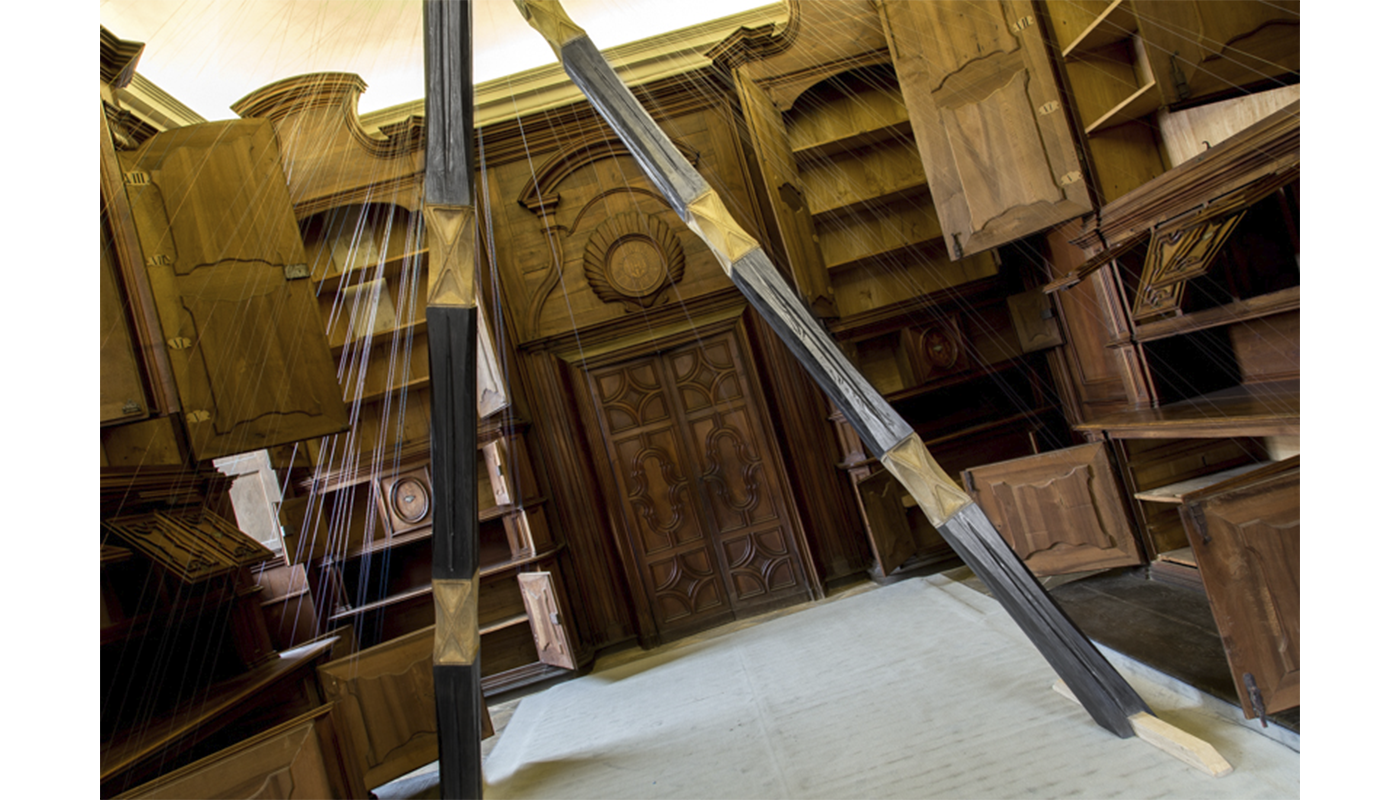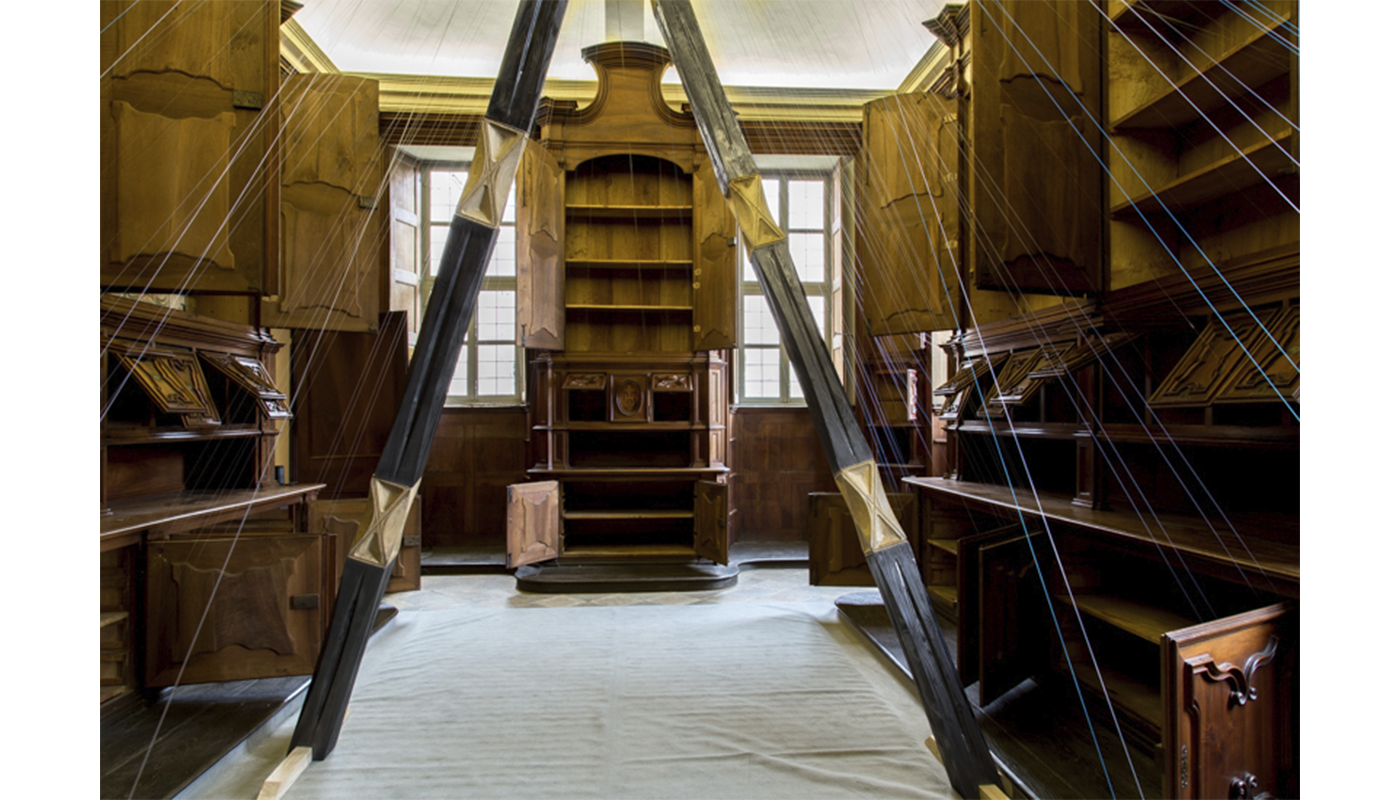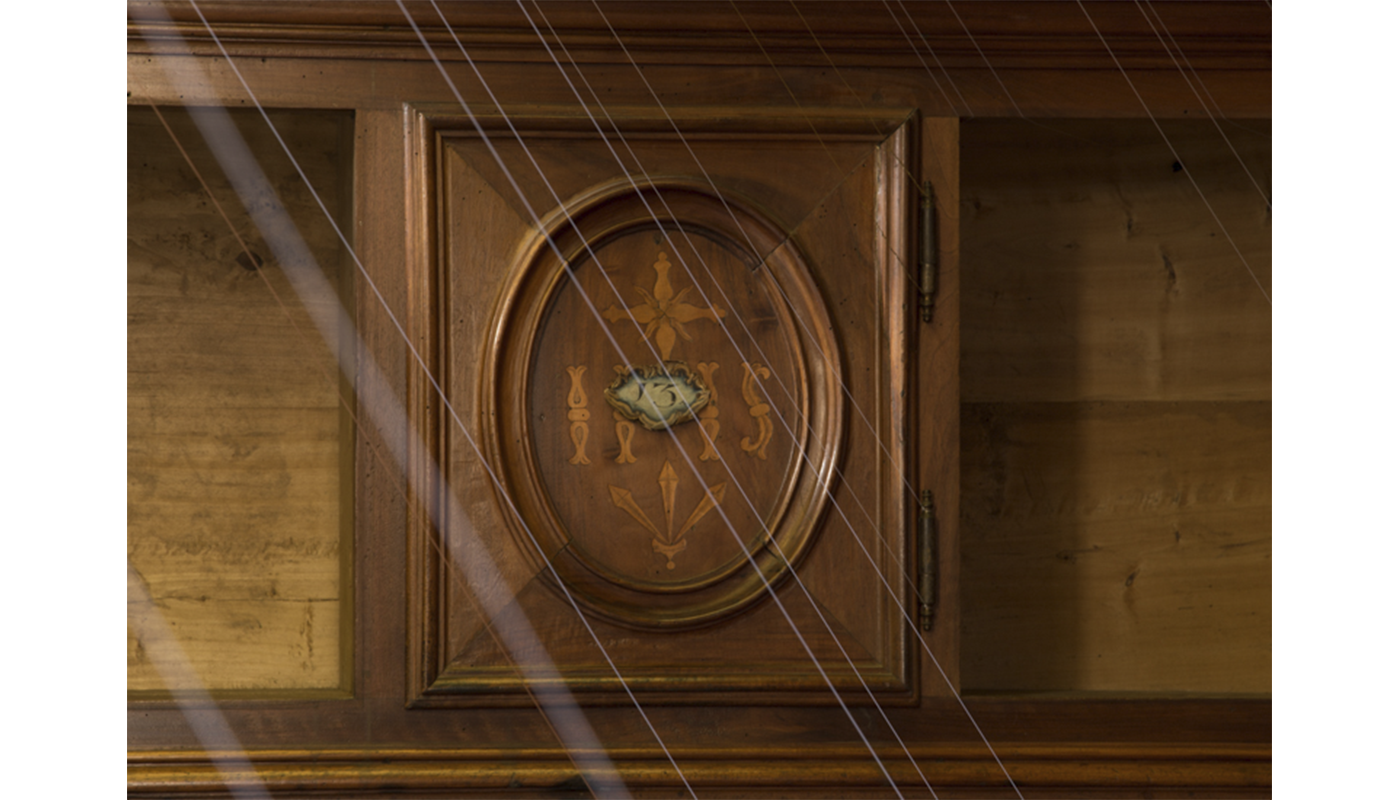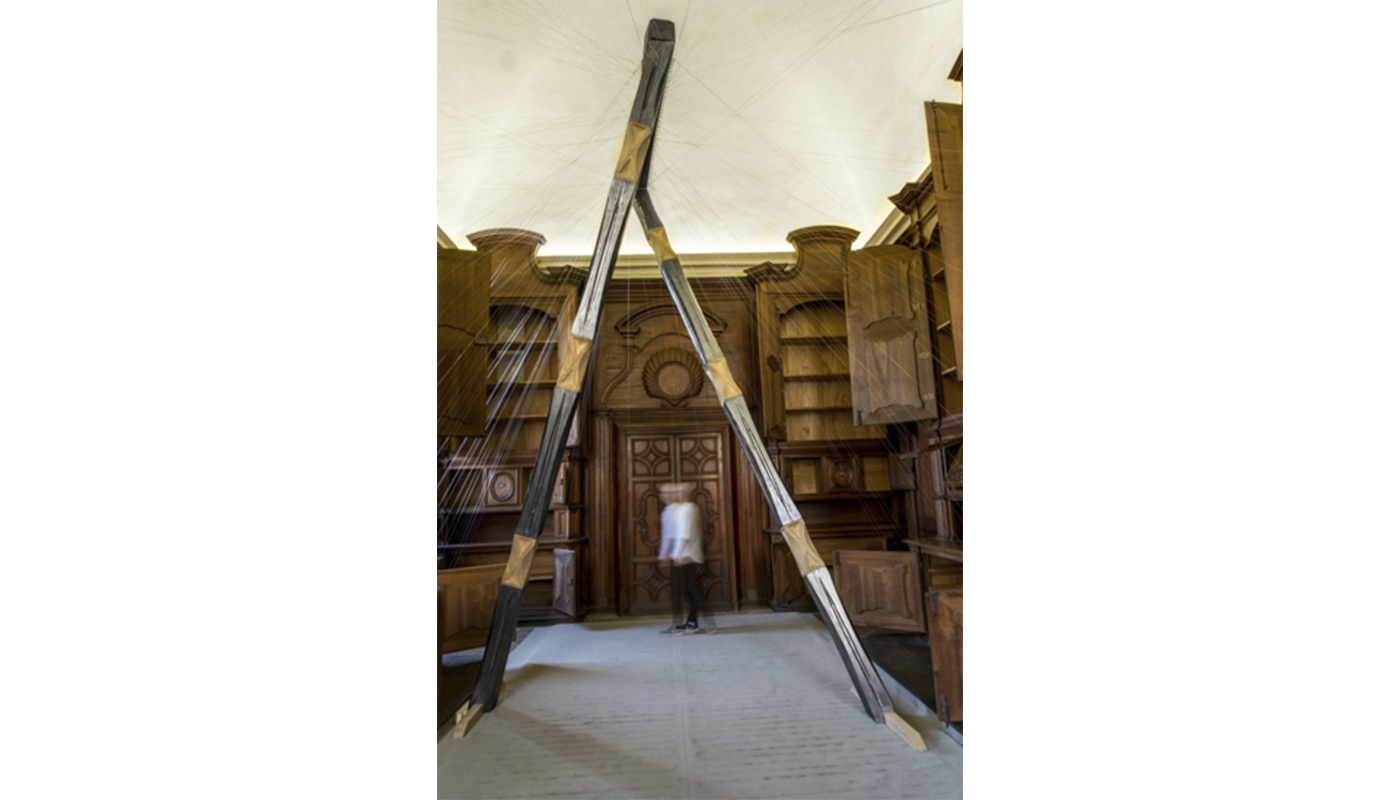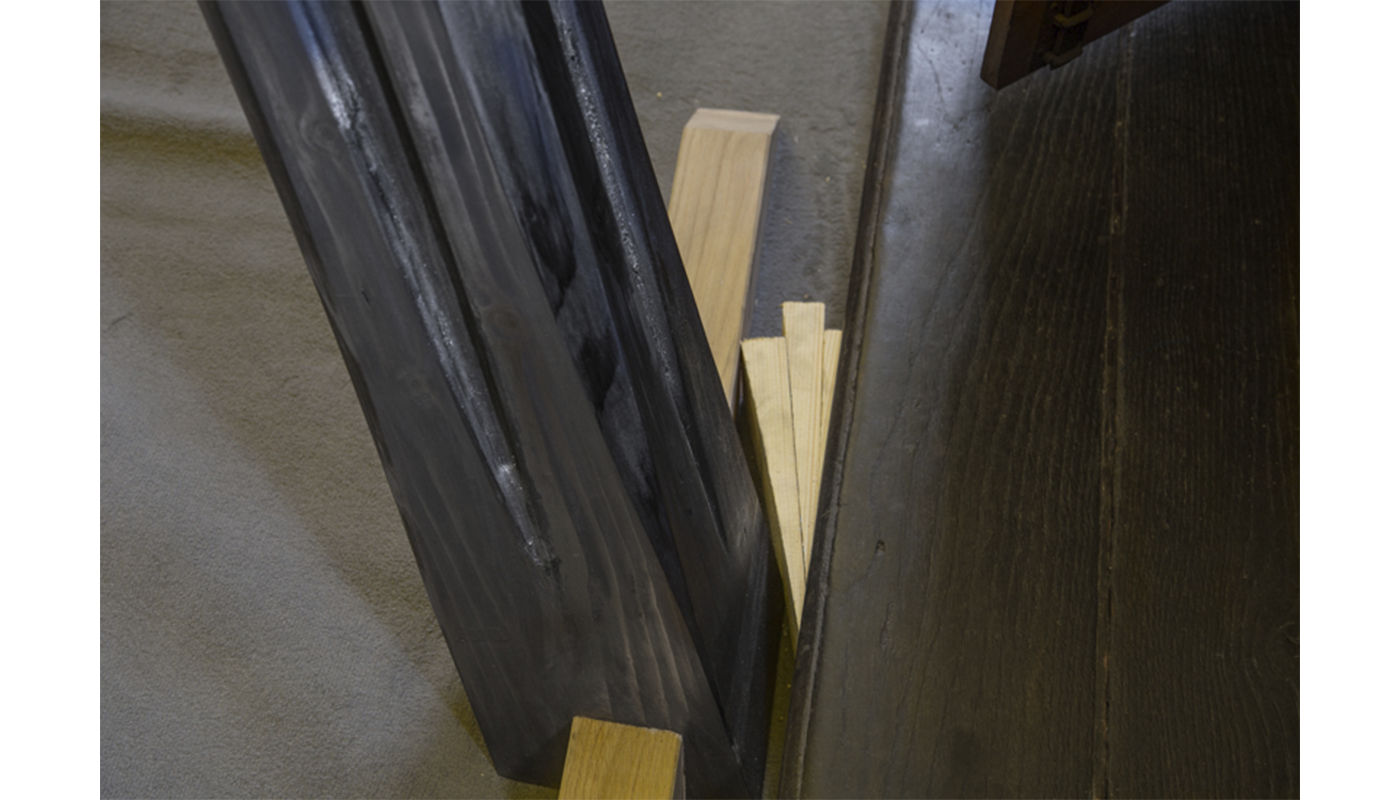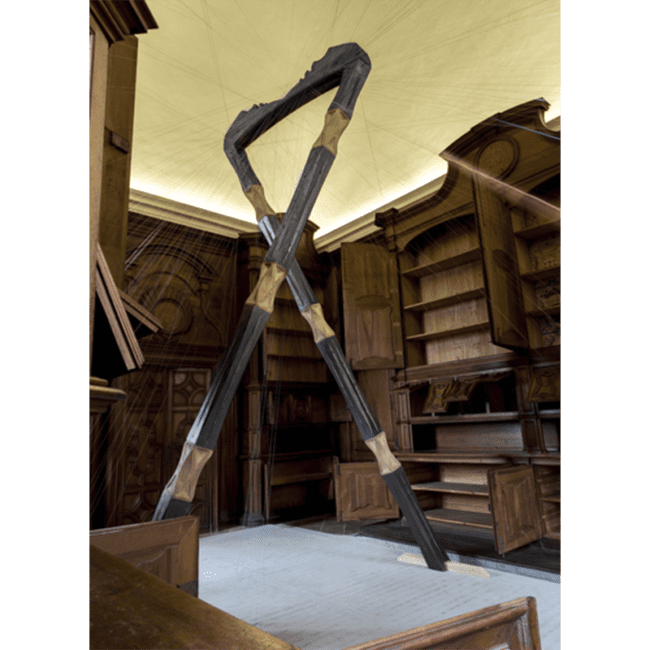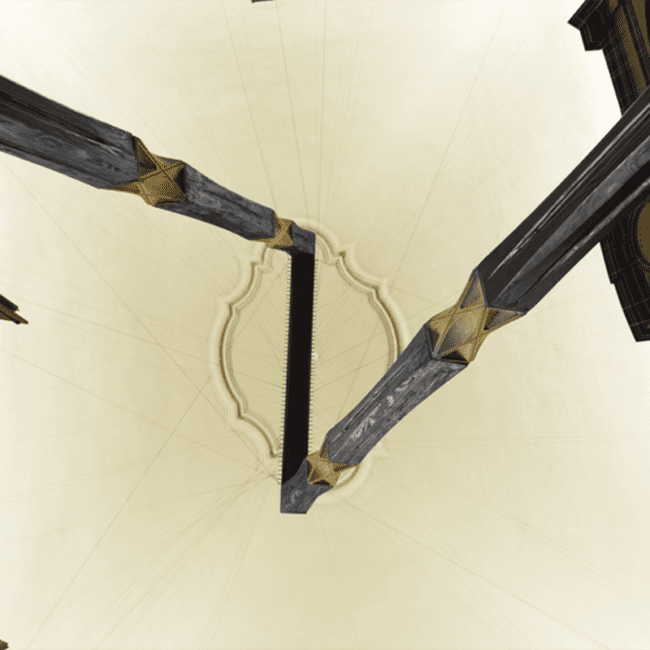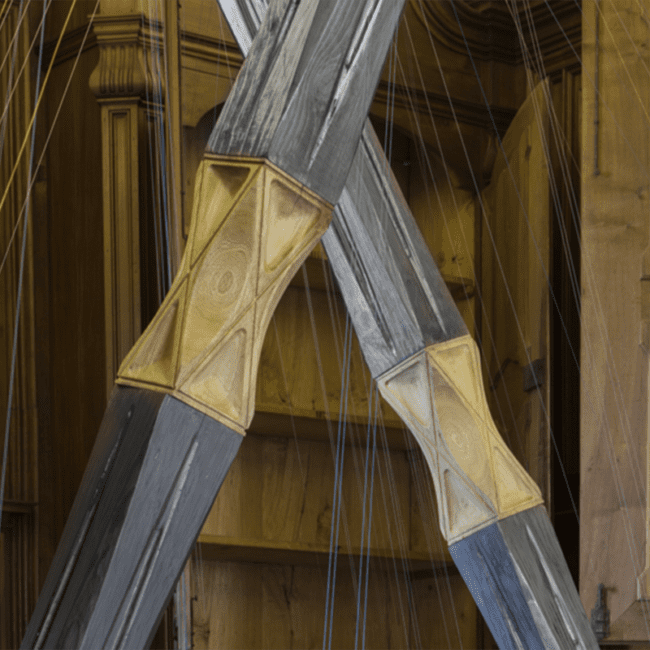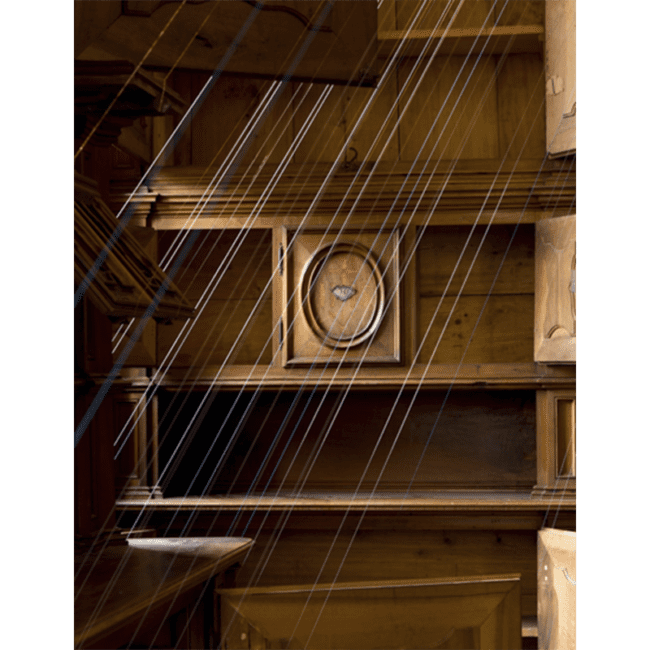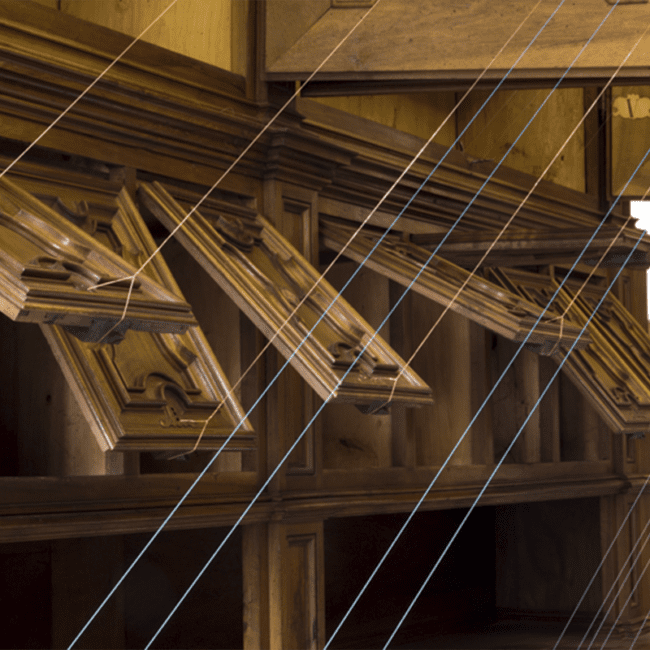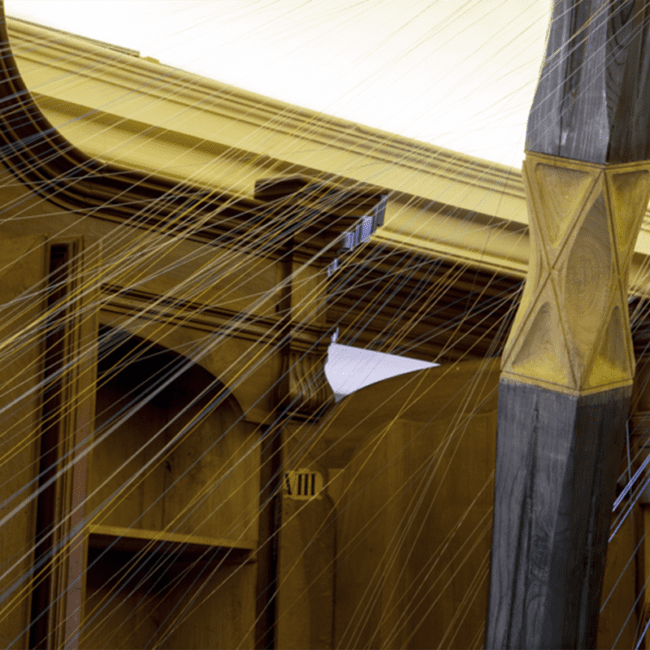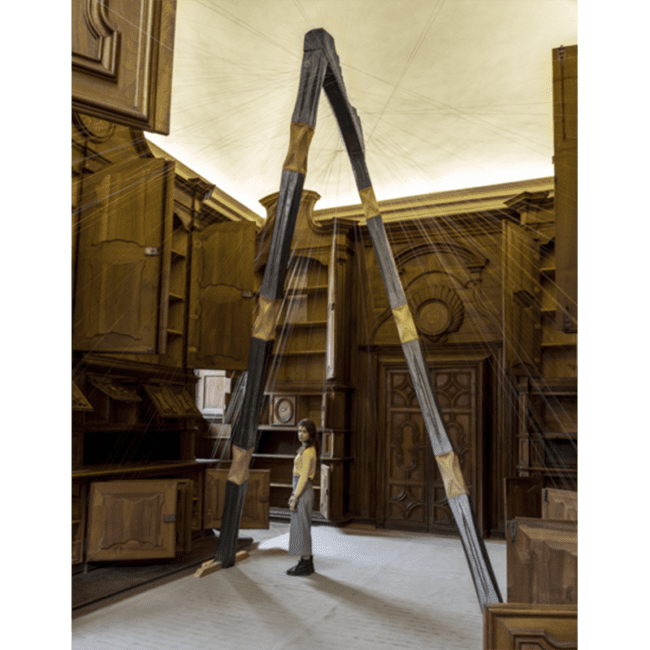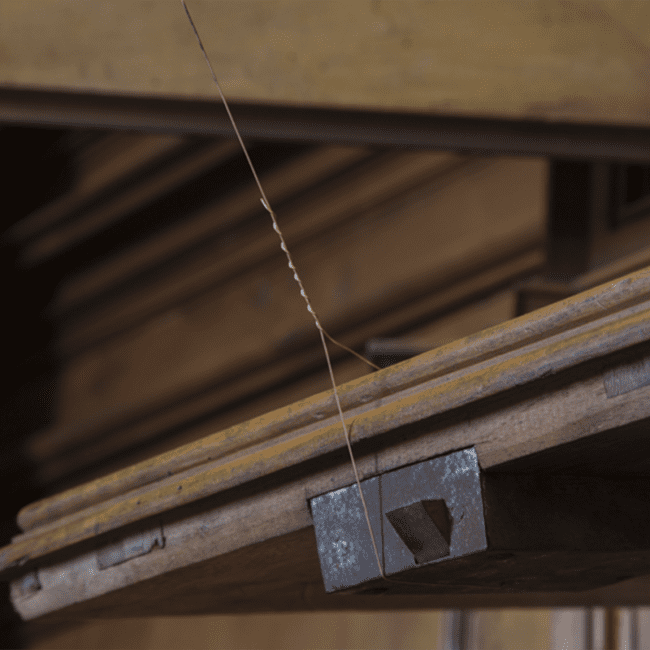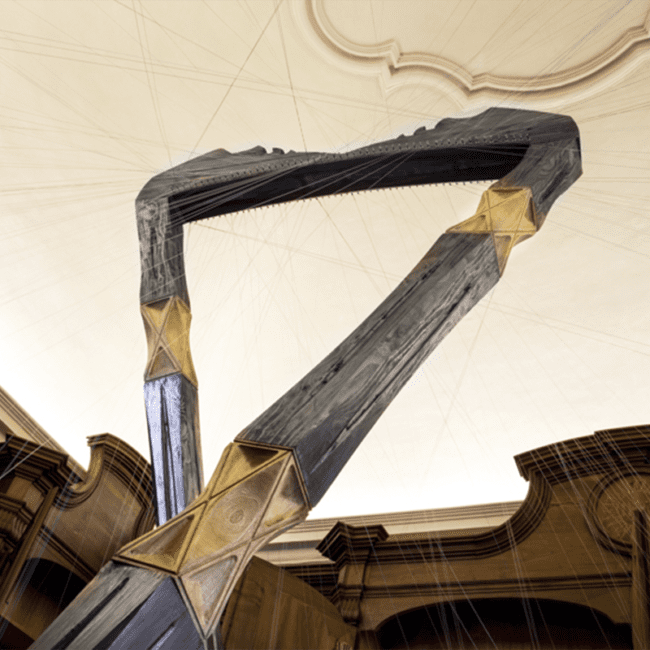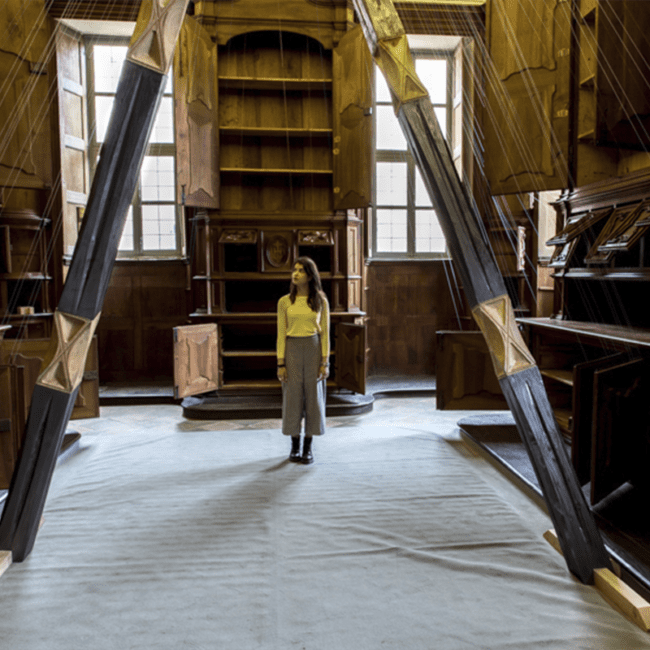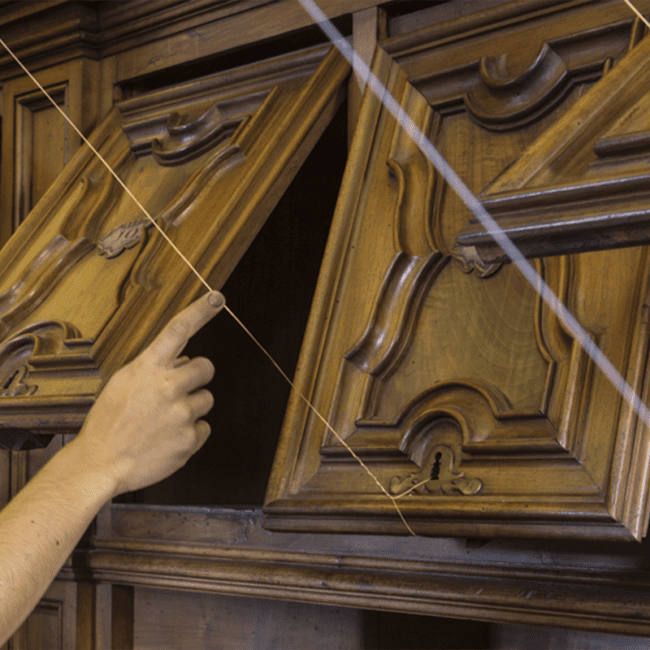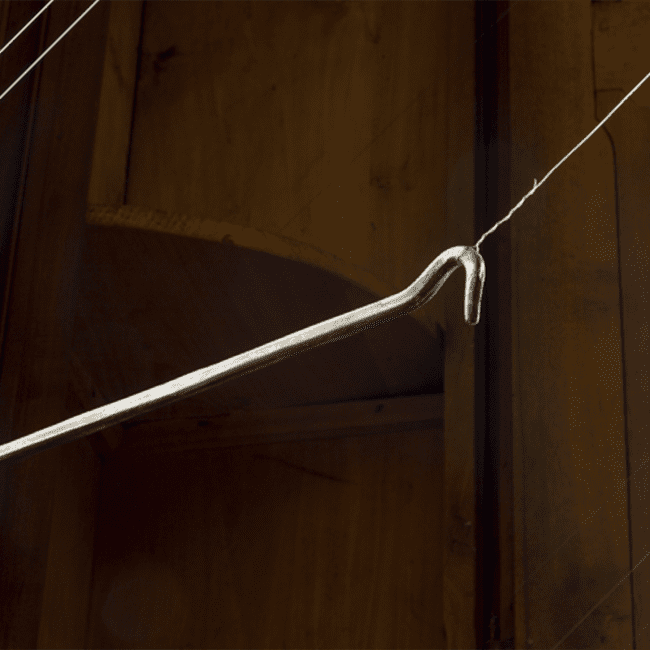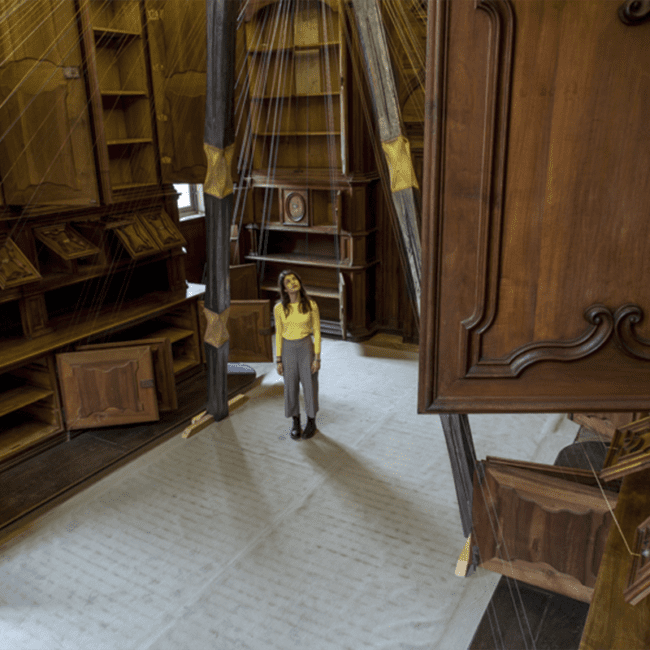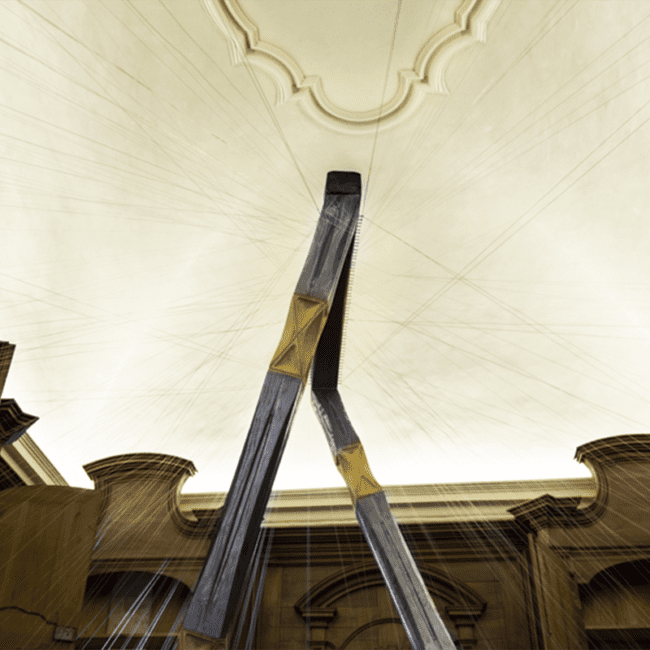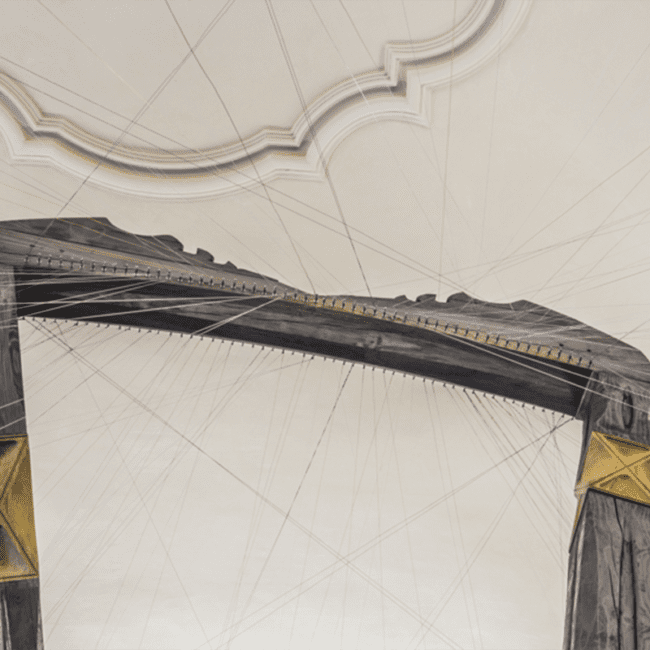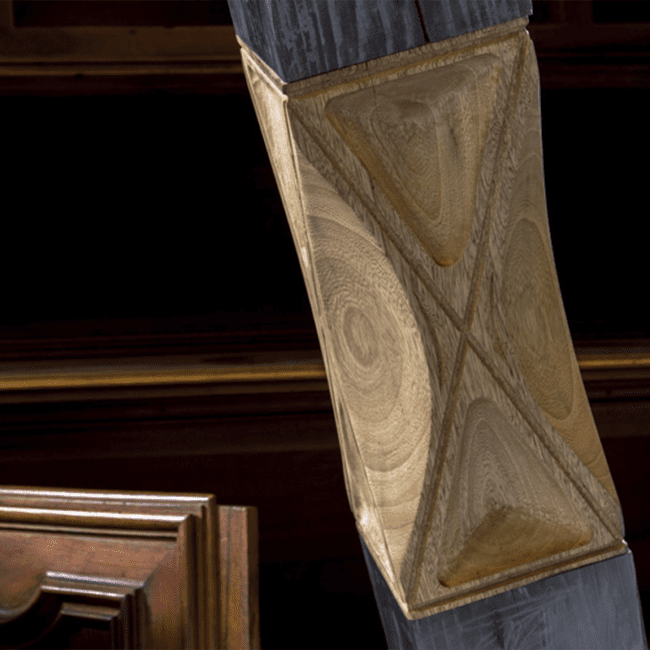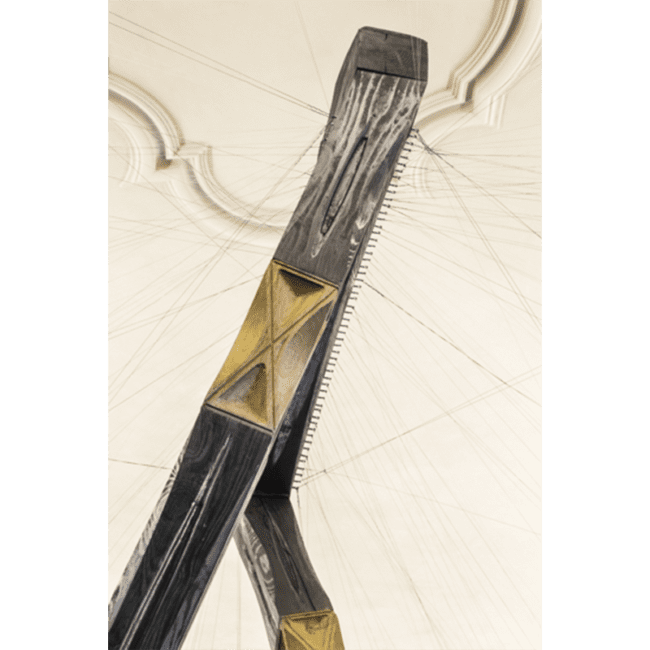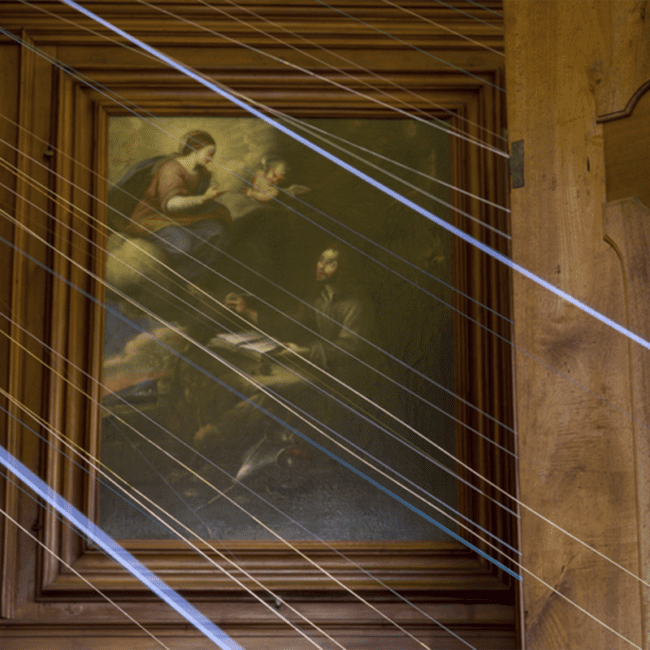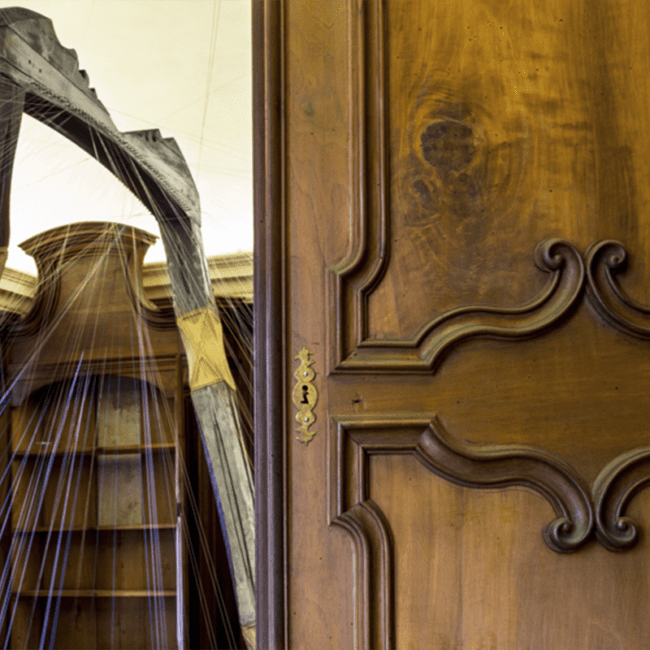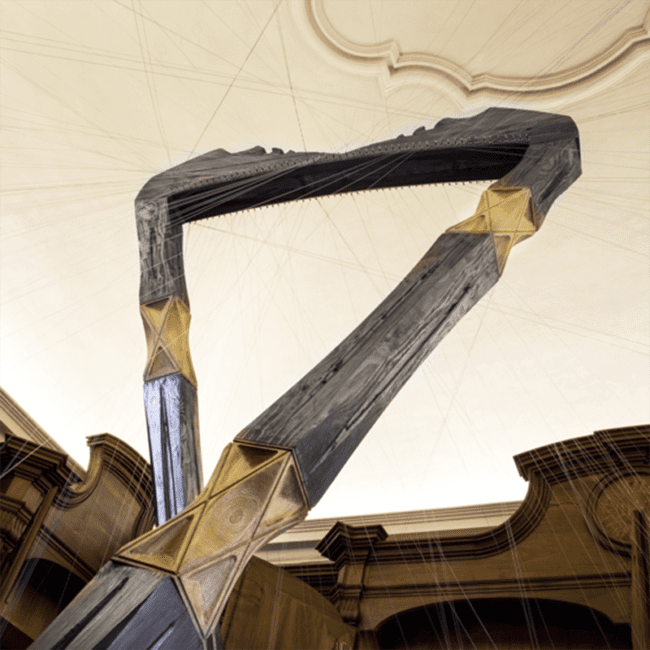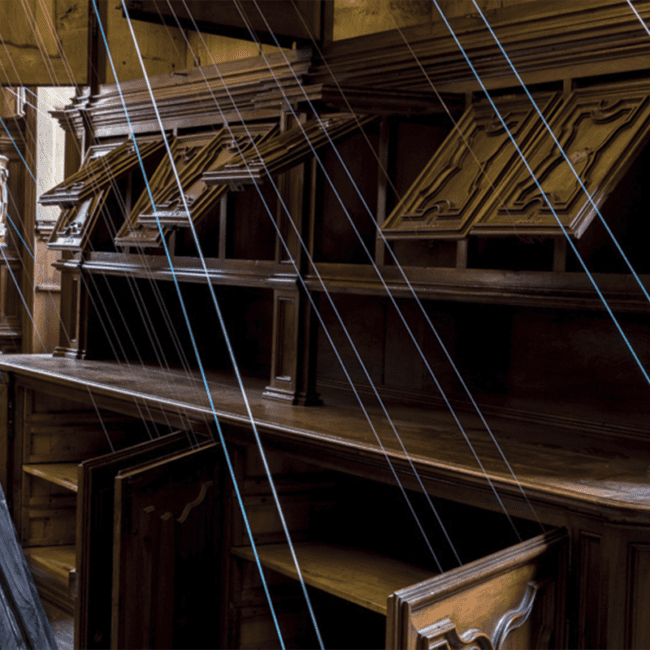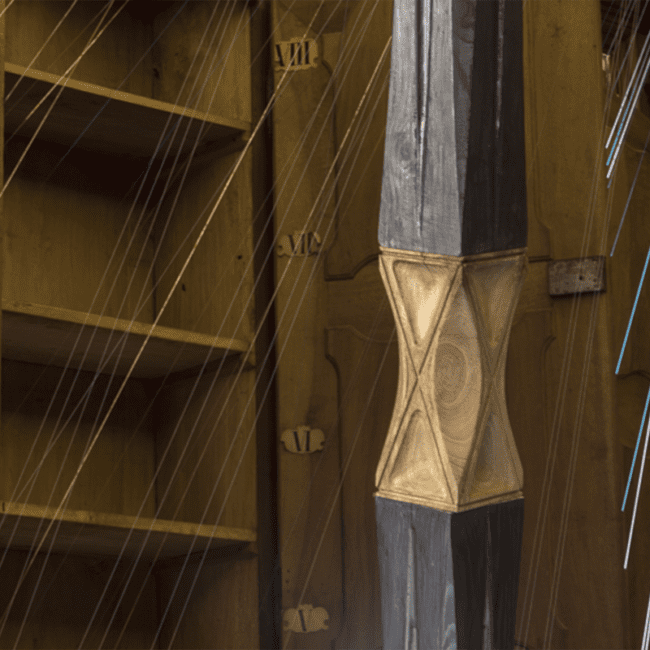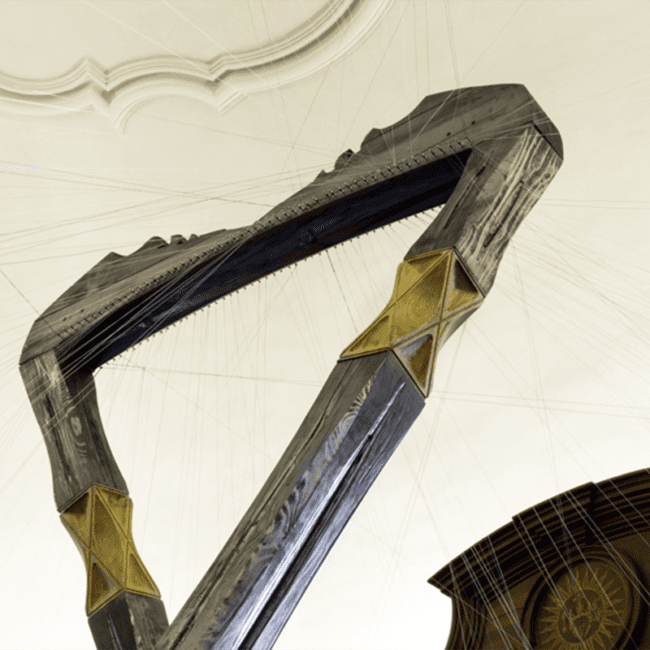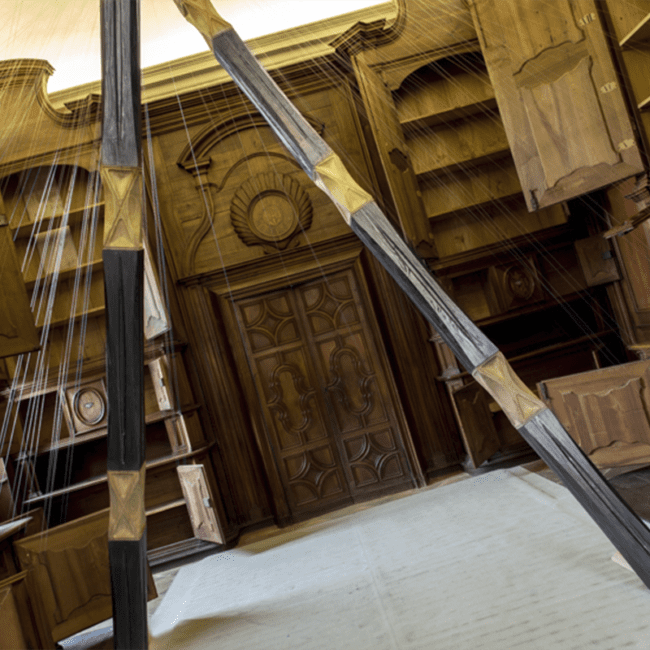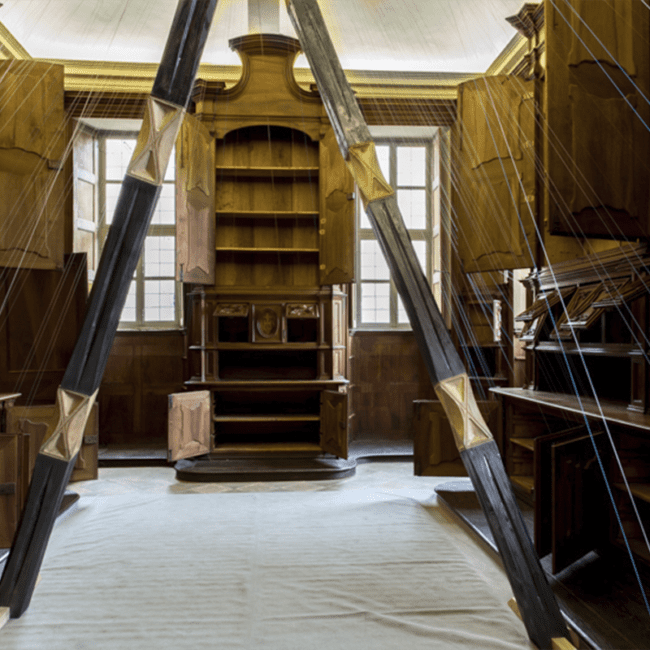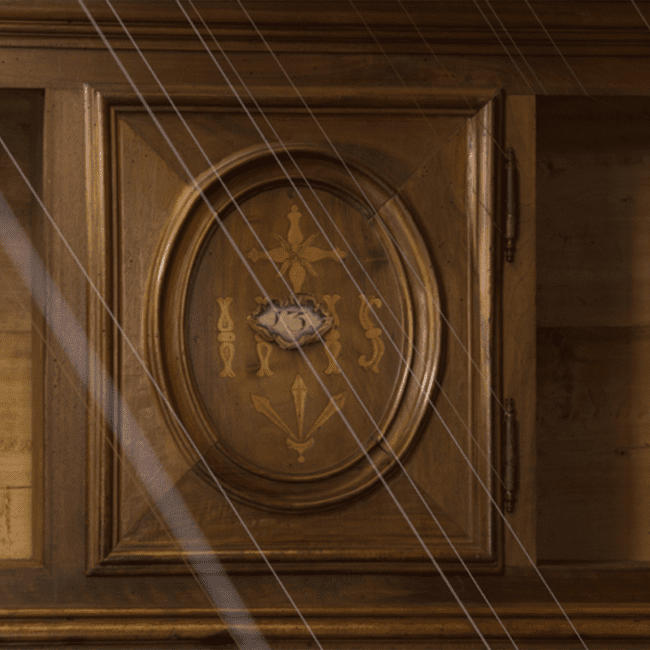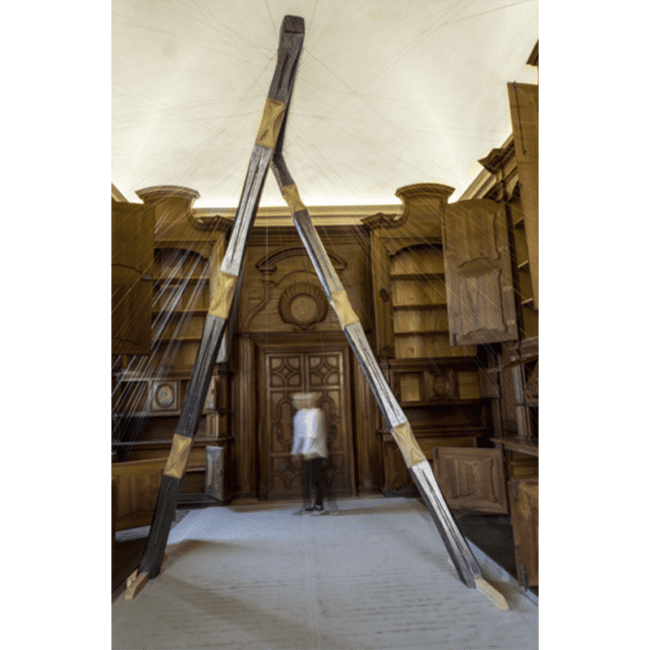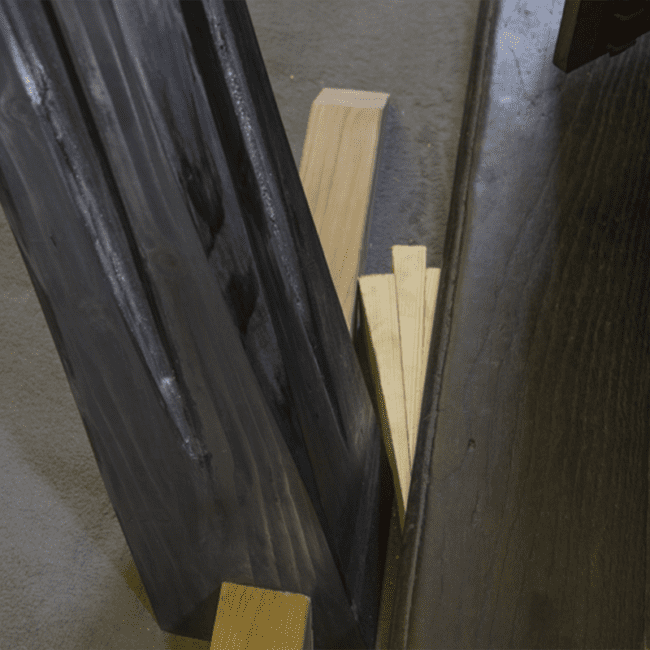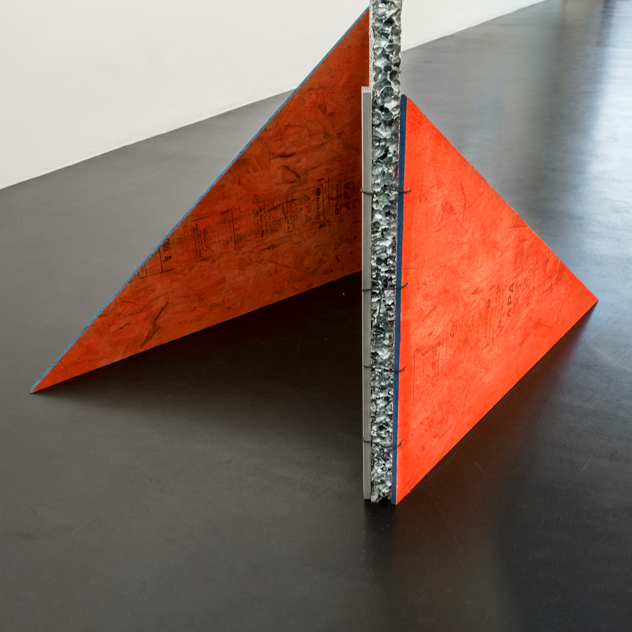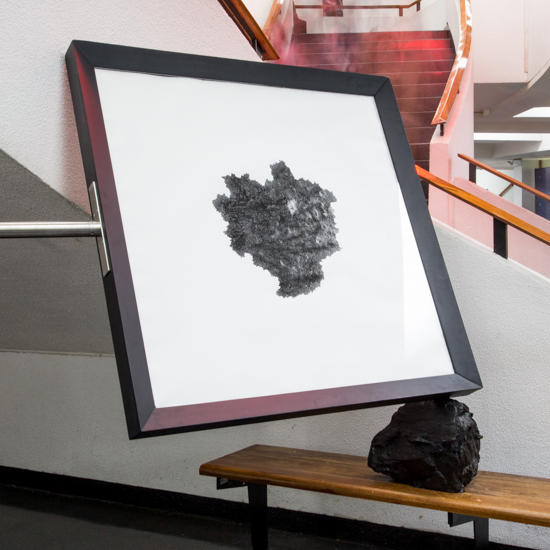Wood (Flormorado and Pine) bronze, copper and metal wire, nylon. 600cm x 20cm 230cm
The Harp is an exploded copy of the Tópaga harp (1680) that occupies the architectural space of Sacristy of the Church of Sant’Ignazio. The instrument’s design is deformed through the use of an elliptical structure with two foci-bridges. Making use of the Sacristy’s open drawers, windows, and physical structure itself as resonance boxes, Harp fabricates a polyarchic harp (of multiple origins) as a flow of historical, architectonic, embodied, and decolonising frequencies that aim to destabilize the origin story delivered to the “new world” by the Jesuit harp.
PREMIO MATTEO OLIVERO 2019
The idea takes shape in the form of a solo exhibition at the Sacristy of the Ex-Sant’Ignazio Church, open from April 26th, the opening day of START festival. The current shape of the hall – part of the architectural complex including the College, now Palazzo Comunale – dates to 1725, but since 1831 has served as an archive, without changing its structure. Inside, it is still possible to admire two frescos representing Sant’Ignazio on both doors and the coat of arms of the Jesuits, who inaugurated the Sacristy at the beginning of the 18th century. Harp project consists in building an expanded copy of the Tópaga harp (1680), that is meant to occupy the architectural space of the Sacristy. The instrument’s design is deformed using an elliptical structure with two focal points. Using the Sacristy’s open drawers, windows, and physical structure as resonance boxes, Harp creates a polyarchic harp, a historical and architectural flow, aiming to destabilize the original history. In 1725, the Order of the Jesuits inaugurated the Sacristy of Sant’Ignazio Church in Saluzzo. The same year, the Jesuit Father José Gumilla was directing one of the most ambitious territorial expansions in the conquest of the Americas in the Orinoquía region of the New Kingdom of Granada—a contiguous region shared today by Colombia and Venezuela. The practice of polyphonic European music was one of the main tools used to convey the system of European values during this period of Jesuit expansion and evangelization in the Americas. Among the instruments used to organize processes of territorial, cultural, and sensory colonization, the harp stood out for its portability and structural simplicity.
Using the harp as a symbol of its ancient Greek and Roman origins, Italian Humanism strategically deployed art’s mimetic capacity to (re)form communities in the “New World.” For the Jesuits, the Renaissance harp worked as a synecdoche capable to make the classical universe of European cosmology present and audible.
Harp uses the numerous drawers and lockers of Sacristy’s furniture, opening them and making the archive’s structure open, visible and resounding. The instrument will use a set of diverse resonance boxes: the building itself, the drawers and the windows. Created in collaboration with the composer Nicolás Jaramillo, a musical piece will be performed during the exhibition’s opening by a local choir, from the province of Saluzzo. Singing with their heads inside the open drawers, the performers will not directly play the harp, but will use the vibration of their voices to make the strings resonate through the space. The entire structure of Harp parasites the space it inhabits to sustain itself amidst a network of physical and discursive tensions to build a temporal and embodied experience connecting two dissonant spaces and historical experiences. This project renews and gives new meaning to the harp through an erratic process of sensorial counter-conquest.
